

St. LouiS AmericAn
‘People should still be able to eat’

By Melanie Johnson and Nia Hightower For The St. Louis American

Classroom champions

By Kenya Vaughn St. Louis

A need for action – still
By Sylvester Brown Jr. St. Louis American
The recent “No Kings” rallies held in more than 2,700 cities across all 50 states, making it one of the largest single-day demonstrations in U.S. history, drew an estimated 7 million protesters.
The demonstrations, organized in protest of President Donald Trump’s authoritarian actions and alleged corruption within his administration, were considered a success because of the massive turnout and largely peaceful conduct of participants.
Renowned activist, Percy Green II, 90, regarded the protests as “a good start.”
“It was a tremendous start, but we have to do more than that,” Green stressed. “We have to make the administration feel the consequences of their poor decision-making by eventually calling for a general working strike.”
If the working class stopped working for a week or two and went to the streets, Green insists, it would have a much larger impact. Why? Because that type of messaging backed by large-scale, organized dramatic action will be more newsworthy and get the attention of the masses and all government officials, he said.
GREEN, A12

Parents blindsided
By Ashley Winters St. Louis American
When the St. Louis Public Schools board fired Superintendent Millicent Borishade last month, many parents were left blindsided, worried that the ongoing board turmoil could disrupt classrooms and student learning.
Whitni Perry, whose 6-year-old daughter attends one of the district’s magnet schools, is among them.
“All this drama is distracting from the real work that needs to be done — instructing the students and supporting the schools,” said Perry, who learned about the Oct. 24 firing from social media. “That highlights a stronger need for communication within the board for the sake of the community,” she said.
Photo by Lawrence Bryant / St. Louis American
Photo by Lawrence Bryant / St. Louis American
Cheryl Denise Smith Walker emcees an Oct. 7 ceremony honoring longtime St. Louis civil rights activist Percy Green.
Photo by Wiley Price / St. Louis American
Guest Editorial
Compassion has been left behind
By Frances Murphy Draper
As Americans worry whether they’ll get their next paycheck, keep the lights on, or afford dinner tonight, an internal email dated October 31, 2025, from the halls of the U.S. Department of War (formerly the Department of Defense) lands — addressed to “Policy Colleagues,” wishing them a “Happy Halloween” and announcing that the 59-minute early-departure rule is in effect so everyone can get home for trick-or-treating.
The sender? Elbridge A. Colby, Under Secretary of War for Policy.
Let that sink in.
People are being laid off. Budgets are frozen. Contractors are waiting months for payment. Air traffic controllers and TSA officers — the people who keep our skies safe and our airports functioning — are working without pay during this shutdown, trying to stay focused while wondering how to feed their families. Morale across the federal workforce is scraping bottom. And yet, in the corridors of power, someone thought it appropriate to celebrate a secular holiday with early dismissal.
to grant time off for trick-or-treating?
The message is loud and clear: “Our comfort matters more than your hardship.”
Hypocrisy is easy. Indifference takes practice. But moral blindness — the kind that allows a nation’s leaders to lavish themselves with luxury while ignoring hunger in the streets — that’s something else entirely.
And let’s be clear: only Congress has the constitutional authority to create, dissolve, or formally rename a federal department. The president’s September 5, 2025, executive order allows “Department of War” as a secondary or official styling, but the legal name remains the Department of Defense unless Congress changes it.

Whatever happened to “government of the people, by the people, for the people”? It’s been looking more like government above the people, apart from the people, against the people — ever since #47 was sworn in.
By Benjamin Jealous
The relationship between poverty and family breakdown has always been undeniable.
For decades, conservatives have rightly sounded the alarm about family breakdown — declining marriage rates, rising single parenthood, children without stable households. Strong families are the foundation of strong communities. But here’s what we need to be honest about: You cannot build strong families on poverty wages.
The past year has made this undeniable. Grocery prices remain high. Rent keeps climbing. Childcare costs are crushing families. MIT’s Living Wage Calculator shows even the cheapest county in America now requires $33.82 per hour for a modest two-parent household to cover basics. Against a $7.25 federal minimum wage, families are drowning.
Here’s what America literally cannot afford to forget: This year, videos went viral across MAGA social media claiming Donald Trump would raise the minimum wage to $25 an hour. The videos were false — Trump never made that promise.
Let’s imagine the president of the United States was willing to establish a family-sustaining wage. What would happen?
The symbolism couldn’t be clearer.
While ordinary Americans face economic whiplash and mounting uncertainty, government insiders are handing out candy — not compassion. And even as the nation tightens its belt, #47 has already demolished the historic East Wing of the White House to build a sprawling ballroom fit for royalty. A ballroom. While millions struggle to make rent.
This isn’t just tone-deaf. It’s heartless.
Leadership should model sacrifice, not spectacle. True public service calls for empathy, not excess. When government workers are going unpaid, when families are skipping meals, when the most vulnerable are pleading for relief — what message does it send
And now, even the word democracy itself has become suspect — quietly dropped from philanthropic mission statements and placed on “avoid lists” alongside diversity, equity, inclusion, and even Black. When the ideals that define our shared humanity are treated as liabilities, we are in dangerous territory indeed.
It’s time to bring compassion back into public service — and courage back into civic life. Leadership is not about privilege, but about responsibility. Until that happens, the rest of us — the people who still believe in justice, empathy, and truth — will keep holding up the mirror.
Because someone must remind those in power what service really means — that they exist to serve the people, not the other way around.
Frances Murphy Draper is CEO and publisher of The AFRO-American Newspapers www.afro.com




shifts. With $30 an hour in Chicago, those mothers could work one job, be home for dinner, help with homework. The impossible childcare math — $10,000-$15,000 per year per child versus $15,080 annual earnings at $7.25/hour — would finally work.
Communities could strengthen. When workers have money in their pockets, they spend it locally. Church attendance increases when parents have Sundays off. Volunteer rates rise. Little League teams get coaches.
Taxpayers would save an estimated $65 billion annually. Currently, we subsidize corporate payrolls through food stamps, Medicaid, housing assistance. That’s corporate welfare. A $25 federal minimum wage, phased in gradually, would reduce government dependency dramatically.

Marriages could increase. Geoffrey McAdam in Indiana works full-time earning just under $47,000 a year and can’t afford independent housing, much less support a family. Research shows when male wages decline, marriage rates plummet — not because values changed, but because some men don’t feel they can fulfill the provider role. Financial stress is the number one cause of divorce.
Fathers could be present. Men working multiple jobs miss Little League games, homework help, dinner conversations. Men who can’t afford housing delay fatherhood altogether. When fathers earn family-sustaining wages, they can work one job and be there.
Children could thrive. When parents aren’t working 60-80 hours just to survive, they’re home. Research shows minimum wage increases improve children’s health outcomes, educational achievement, and emotional well-being. Child neglect reports drop — not because parents suddenly improve, but because they have resources and capacity to care properly.
Mothers could mother. Anneliese Jackson works in an Elgin, Illinois restaurant earning $9 an hour after eight years, alongside single mothers who miss their children’s childhoods working exhausting
The importance of judiciary independence Commentary Family values require family wages
By Cynthia A. Baldwin
If the minimum wage had kept pace with both inflation and increases in corporate productivity since 1968, it would have been $25 today. Workers haven’t gotten less productive — corporations have gotten vastly more profitable while wages stagnated. And with AI poised to drive corporate productivity dramatically higher over the next five years, that gap will only widen unless we act now.
The minimum wage used to be a family wage. One earner could support a household, buy a modest home, raise children. That was America working as designed.
The Living Wage for All coalition is proposing a family-sustaining wage phased in over several years to give businesses time to adjust — with large corporations reaching $25-$30 faster and additional time for small businesses. The proposal includes training, technical assistance, and grants, loans, and tax credits to help small businesses make the transition. End all subminimum wages, including the subminimum wage for tipped workers, still just $2.13. Those viral MAGA videos weren’t really about Trump. They were about working families desperate for wages that actually support family life. Both Democratic and Republican leaders have failed working families on this issue. But what’s clear is that voters in both parties are eager for their leaders to do better. The question is whether we’ll finally listen.
Benjamin Jealous is a professor of practice at the University of Pennsylvania and former national president and CEO of the NAACP.
Commentary
President Trump posted the following on social media on May 2025: “No District Court Judge, or any judge, can assume the duties of the President of the United States.”
This is antithetical to Jefferson’s quote. No judge is trying to assume the duties of the United States President. The judiciary is only doing its duty under the Constitution.
In 1803, in the case of Marbury v. Madison, the Supreme Court upheld the power of the courts to declare laws passed by Congress to be unconstitutional and therefore void, thus establishing the principal of judicial review. Chief Justice Marshall reasoned that the constitution is the supreme law, and Congress cannot pass laws that conflict with it.
States against all enemies, foreign and domestic.”
The core of the oath is to uphold the Constitution, the Rule of Law, not to undermine the courts or to flaunt the miscarriage of justice. Another way that an independent judiciary upholds the rule of law is by doing the following:
Protecting individual rights even in the face of popular opposition or political opposition.
Serving as a check on the executive and legislative branches by preventing them from abusing their power.

The ruling solidified the judiciary as a co-equal branch of government. The Constitution does not allow the expansion of the powers of any branch except in limited cases as stated in the Constitution. In fact, the Supreme Court found that the Judiciary Act of 1789 attempting to expand the power of the Supreme Court conflicted with the Constitution and was therefore void.
The Rule of Law has been sacrosanct in the United States since our founding 249 years ago. Dictators come to power in many ways, but one commonality is to undermine the rule of law
Contrary to what we are being told today, cabinet secretaries do not swear an oath to a person. They swear “to support and defend the Constitution of the United
Dictators do two things almost immediately: get rid of an independent judiciary and shut down a free press. No dictator wants an impartial judiciary that applies the law equally, or a press that will print the facts without fear of retribution.
When Elizabeth Willing Powel asked Benjamin Franklin on the last day of the Constitutional Convention in Philadelphia in 1787, what kind of government they had created, he responded, “A Republic, Madam, if you can keep it.” Our democratic republic depends on the active involvement and informed participation of its citizens. Informed participation does not mean listening to or reading information only from people with whom you agree or from people with political bias.
Guest Columnist Ben Jealous
By Ashley Winters
St. Louis American
When Michelle Charbonnier first walked through the doors of MoNetwork nearly a decade ago, she was a volunteer at the nonprofit that assists drug users, trying to give back to the kind of place that once helped her.
Today, Charbonnier leads the organization as its executive director, carrying the same empathy and lived experience that drew her to the work.
As someone in long-term recovery, Charbonnier has spent the past eight years helping people reclaim their lives. She became Missouri’s first certified female peer support specialist, then served as deputy director before taking the helm of an organization dedicated to changing how society talks about and treats addiction.
St. Louis-based MoNetwork is part of a growing movement reframing addiction as a public health issue rather

Once seeking help, now leading change
than a moral failing. The center offers harm-reduction services, recovery support, education and advocacy, all without judgment.
In Missouri, overdose deaths have dropped more than 25% in the past year, according to the University of Missouri-St. Louis Addiction Science Team. Charbonnier sees that decline as evidence that a shift in language and compassion is taking hold.
“Language matters,” Charbonnier says. “The words we use have impact. Saying ‘drug use’ instead of ‘drug abuse’ changes how people see themselves and how the community sees them. When you say someone is ‘clean’ or ‘dirty,’ you’re not describing a whole person — you’re labeling them.”
At MoNetwork’s Dutchtown recovery center, the philosophy of dignity is lived out every day. Visitors can receive fentanyl test strips, Narcan, wound care, meals, hygiene kits and safe-sex supplies. There

are computers, cots and referrals for mental health and housing resources. The organization even hosts free shower and haircut days.
“We meet people where they are with love and compassion,” Charbonnier says. “Everyone has value here.”
MoNetwork’s work extends beyond its building. Teams travel through downtown and north St.

Louis to reach people who often fall through the cracks of traditional care systems. The focus is safety, connection and dignity over punishment or abstinence alone.
Last year, the center served more than 4,000 people across the region, many facing substance use, homelessness, mental health challenges and social stigma. Staff includes peers in recovery
“We meet people where they are with love and compassion. Everyone has value here.”
- MoNetwork Executive Director Michelle Charbonnier
who share lived experience to offer proof that healing is possible.
“When I was a peer support specialist, I could see myself in the people I mentored,” Charbonnier says. “Now, even as an executive director, I still can.”
The work is paying off. Missouri recorded two consecutive years of declining overdose deaths, reaching the lowest level



since 2017. St. Louis City reported a 41% drop in drug-involved deaths from 2023 to 2024, while St. Louis County saw a 16% decline.
Experts credit increased access to naloxone, the overdose-reversing medication better known as Narcan, and the efforts of community organizations like MoNetwork that distribute it widely and train others to use it.
Still, the need remains. Fentanyl drives most fatal overdoses, and many Missourians struggle with finding stable housing or mental health care. Charbonnier says that’s why her team keeps showing up, whether through outreach in downtown St. Louis or wound care in the center.
“As a community, we are only as healthy as our sickest members,” she says. “Those are the people we have to lift and empower.”
For Charbonnier, the mission is personal.
“This work is my why,” she says. Every person who walks through the organization’s doors, she adds, deserves to be seen, heard and loved.
Recovery isn’t about being perfect, she says, it’s about being human.



Photo by Ashley Winters / St. Louis American
Students at BELIEVE Academy practice clinical skills as they prepare for jobs in health care after graduation.

BELIEVE Academy partnership aims to launch health-care careers
By Ashley Winters St. Louis American
In an area of BELIEVE Academy equipped like a hospital room, high school students use real stethoscopes and other medical tools to examine “patients,” often a classmate or a lifesize simulation doll.
These north St. Louis teens aren’t just learning about health care; they’re training for careers while earning college credit. At BELIEVE Academy, a tuition-free early college and career high school, students work toward diplomas, professional certifications and even associate degrees earned during their four years of high school.
The school’s partnership with BJC HealthCare, supported by a $10 million gift from Bloomberg Philanthropies, is the first of its kind in St. Louis. It blends classroom instruction with up to 10 hours a week of hands-on learning alongside BJC clinicians, giving students real exposure to patient care, medical technology and workplace expectations.
“It’s a beautiful, blossoming partnership with
BJC,” said Tambra Pendleton, founding principal of BELIEVE Academy.
Students apply what they learn both in labs and at home, where they often practice skills like blood pressure checks on family members, strengthening ties between education, health and community.
“It’s very hands-on,” said Pendleton, recently honored with a St. Louis American Foundation Salute to Excellence award. “BJC has poured into our students — not just teaching skills, but building their confidence and character.”
The partnership aims for more than half of graduates to move directly into roles within the BJC system, helping meet workforce needs while creating pathways to stable, high-wage jobs for young people in north St. Louis.
BELIEVE opened this fall with 37 freshmen and plans to grow to 400 students by 2028. With college courses, clinical training and support from a major health-care partner, leaders say students are stepping into futures once harder to access, right in the neighborhoods they call home.
Commentary
We’ve been ‘We the People’ for just 10 years
By Camike Jones
For many, the American dream could finally be fully realized during the last decade. While millions have believed in the dream for centuries, its reality remained out of reach.
That may sound extreme, but considering the number of years the U.S. has existed, there has only been a brief period during which all citizens held the same rights.
It has been just over 60 years since the Civil Rights Act of 1964. Women gained the right to vote in 1920, and people were finally able to vote without facing racial discrimination in 1965.

The Equal Credit Opportunity Act of 1974 prohibited discrimination in lending based on gender or marital status. In other words, women could buy property independently without a husband’s permission or a male co-signer. Same-sex marriage became legal in 2015.
So, it has only been since 2015 that every citizen in the U.S. has been able to get married, vote and buy property regardless of their race, gender, or sexual orientation.
That’s a mere 10 years — just one decade. One decade of full citizenship and humanity. One decade of the right to have your voice heard and build the life that you want.
All the while, a counter movement has been working to bring the country closer to the original caste system on
which it was founded. This was when “we the people” did not include all the different people living in America. States like Missouri and Indiana have re-outlined congressional districts with the sole purpose of reducing some voters’ right to fair representation. The actions are not in the best interests of “we the people.” They are the product of presidential demands. What felt like freedom to some in 2015 felt like an attack on the fundamental beliefs of others. As one group finally felt seen and heard, another group felt ignored, offended, left behind, or confused. This zero-sum mindset continues to play out in our country. In this game, if someone wins, someone else must lose. Some operate as if someone else must grow poorer when they grow richer. Or someone else must grow hungry for them to eat well. But is it possible for everyone to win? Is it possible for all Americans — left or right, rich or poor — to have rights, feel seen and live freely? We may not all become rich, but could we just be — be our full selves, be proud of our cultures and be allowed to build a life of which we are proud? Will there ever be a day when “we the people” refers to all people? I, for one, sure hope so. And I hope I’m still around to see it.
Camike Jones is editorin-chief of the Indianapolis Recorder.

Photo courtesy of BELIEVE Academy
Carmike Jones
A scoop of Black girl magic
St. Louis baker helps shape Clementine’s holiday cookie ice cream collection
St. Louis American staff
Clementine’s Ice Cream has partnered with six pastry chefs from around the country to develop flavors based on the chefs’ cookie recipes. Among them is St. Louisan Reine Keis, founder of SweetArt Bakeshop and Café.
The collection debuted this week at all Clementine’s locations and is available for nationwide shipping.
The chefs have transformed signature cookie recipes into limited-edition ice cream flavors that celebrate the creativity and comfort of the classic holiday cookie exchange.
The inspiration came from a Midwest tradition where friends and family gather to swap homemade cookies.

Photo by Jenna Whitmore
Former editor tells Missouri journalists...
free press cannot be assumed
St. Louis American staff
Marty Baron, former executive editor of The Washington Post, cautioned Missouri journalists that American democracy and the free flow of reliable information can no longer be taken for granted and warned that the nation faces a crisis of truth that threatens press freedom and public trust.
Baron, who also held top editorial roles at The Boston Globe and Miami Herald, traced a line from historic press freedom battles to today’s climate.
Speaking Sunday in Frontenac at the Gateway Journalism Review’s First Amendment Celebration, Baron blended alarm and determination, saying constitutional protections once seen as unshakable may be at real risk.
The event also marked the 100th birthday of Holocaust survivor Charles Klotzer, a longtime journalist, newspaper publisher and founder of the Journalism Review, created to hold those in the profession accountable for their news coverage.
Baron, who also held top editorial roles at The Boston Globe and Miami Herald, traced a line from historic press freedom battles to today’s climate. He cited the Pentagon Papers, Watergate and the Globe’s clergy-abuse investigation as proof that journalism’s “highest calling” is holding the powerful to account. But he fears that foundation has grown fragile.
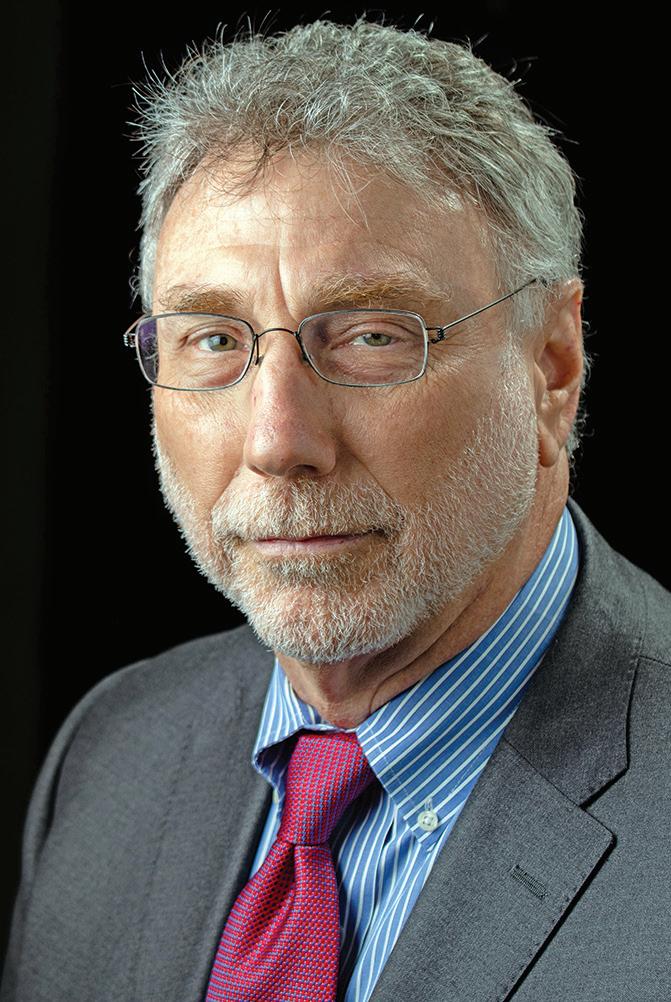
granted,” he said. “I can’t be certain the rule of law will prevail. Can’t be confident that a free press will endure — or that free expression for all Americans will either.” He described a political environment where leaders attack reality, undermine facts and blur the line between truth and propaganda. He warned that authoritarians first try to discredit “independent arbiters of fact,” including reporters,
Marty
former executive
of The Washington
cautioned Missouri journalists that American democracy and the free flow of reliable information can no longer be taken for granted.
judges and scholars. When that trust erodes, he said, communities become vulnerable to manipulation and silence. Baron tied those concerns to realworld examples, noting how independent journalists in Nicaragua and Guatemala have been jailed or forced into exile. The lesson, he said, is that rights can erode “step by step” when
“I no longer take any of that for See
SLPS appoints Dr. Joshua Henning to key position
St. Louis Public Schools Interim Superintendent Dr. Myra Berry has named Dr. Joshua Henning as interim chief of staff.

Joshua Henning
Henning’s SLPS service began in 1999 as a high school history teacher. He served in various school-level administrative roles, including instructional support administrator, assistant principal and principal.
Most recently, Henning was executive director of college and career readiness.

Robert Ferrell, World Wide Technology executive vice president, global human resources, has received a Tech Dogs 2025 People Leadership Award, which recognizes “the Top 25 HR leaders who are revolutionizing talent management through data-driven insights, inclusive cultures, and digital-first thinking.”
Photo by iStock
Dr.
BARON, A6
Baron,
editor
Post,
Reine Keis, an award-winning pastry chef and founder of SweetArt Bakeshop and Café, is among six culinary artists from across the country featured as part of Clemintine’s Ice Cream’s premiere of its Holiday Cookie Exchange Ice Cream Collection.
Continued from A5
“When I first moved into the Lafayette Square neighborhood, my neighbors invited me to a holiday cookie exchange,” said Tamara Keefe, founder and CEO of St. Louisbased Clementine’s. “I had never even heard of one before, but I instantly fell in love with the idea of trading sweets.”
For Keefe, the experience was a way to build community and find connection in a new city.
“It reminded me how food can open doors, build community and turn a city into a home,” she said.
Keis’ contribution to the collection is Thick Mint, a plant-based twist on the iconic Girl Scout Thin Mint cookie.
“I was a Girl Scout, and my favorite time was selling cookies,” Keis said. “Thin Mints were my favorite, with Samoas as a close second.”
Known for her award-winning pastry work flair for reimagining classic treats, Keis brought that same energy to her ice cream flavor. Thick Mint is a rich, creamy malted non-dairy ice cream packed with chunks of
Baron
Continued from A5
power goes unchecked.
He also pointed to domestic pressure on media companies, especially through ownership and regulation. He described news organizations whose owners face regulatory leverage, political retaliation or business incentives to appease power, saying that such pressure already has reshaped parts of the media landscape. He referenced recent

thick mint cookies.
“Everyone loves the traditional Thin Mints — you can eat them by the sleeve,
Federal Communications Commission actions targeting major networks and high-profile journalists, arguing they illustrate how political figures can try to intimidate the press.
Baron also warned that economic fragility makes newsrooms more vulnerable. He urged media organizations to shift away from dependence on social platforms and instead build direct relationships with audiences that value verification and independent reporting. That argument challenges the dominant thinking in
and I’ve seen people do it all the time,” Keis said. “But I wanted something more substantial.”
many newsrooms, where leaders believe long-term survival requires chasing audiences on the digital platforms where so many news consumers have migrated.
“News outlets must navigate away from a dependence on traffic from search engines and social media,” Baron said. “That means cultivating a genuinely loyal, trusting base of readers, listeners and viewers who show support with subscriptions or memberships.” Instability, he said, is now a permanent condition, requiring innovation
Thick Mint is a staple in Keis’ holiday cookie box, and it’s the one fans reach for first. She said
and collaboration “from chief executives to union chiefs.”
He also urged journalists to maintain humility and fairness rather than adopt a combative stance.
“We are not at war. We are at work,” he said, calling for evidence-based reporting and transparency. Audiences, he stressed, should see their own struggles and aspirations reflected in news coverage.
Baron acknowledged the enormous threat posed by disinformation and artificial intelligence, but he refused to surren-
Known for her award-winning pastry work flair for reimagining classic treats, Reine Keis brought that same energy to her ice cream flavor. Thick Mint is a rich, creamy malted non-dairy ice cream packed with chunks of thick mint cookies.
what the Clementine’s team added to make this ice cream come alive,” she said. “But whatever they did — it’s phenomenal. … It’s exactly how I want my plant-based desserts to be in ice cream form.”
Other flavors in the Holiday Cookie Exchange Collection include:
• Sticky toffee pudding, by Justine Doiron
• Cranberry vanilla linzer, by Anna Gordon
• Chipotle cherry rugelach, by Fany Gerson
• Nana’s 7 layer bar, by Megan Garrelts
• Pandan polvoron raspberry cheesecake cookie, by Abi Balingit
The chefs emphasize the tradition of recipe sharing and reinterpretation in pastry work.
“Recipe sharing and collaboration with chefs and home bakers is part of the connection we all share through our love of sweet things,” Garrelts said. “No one in this generation — or any before us — can claim to have invented the first cake, cookie or ice cream.”
But everyone can pass down methods and flavor combinations, Garrelts said.
she was curious how the cookie would translate in frozen form. “I’m not quite sure
der to cynicism. Citing Madeleine Albright, he described himself as “an optimist who worries a lot,” arguing that truth, transparency and public vigilance can still prevail.
He closed by returning to history, noting that attempts to silence journalists stretch back centuries. Democracy, he said, depends on “steadfast vigilance of the conduct of the public officials they choose to lead them.”
Following his remarks, the audience sang happy birthday to Klotzer, who began his journalism
“Clementine’s is a perfect example of this spirit,” she said.
career in 1948 at the Troy Tribune in Illinois and held numerous journalism roles since, including publisher of the Greater St. Louis Jewish Star in the 1950s.
Klotzer urged the journalists to defend free expression “irrespective of any fears which may penetrate you,” adding, “I hope that your own stamina will overcome any intimidation you might feel. Thank you for being here, thank you for supporting the free press and thank you for supporting the Journalism Review.”

Photo by Jenna Whitmore
HealthMattersHealthMattersHealthMatters
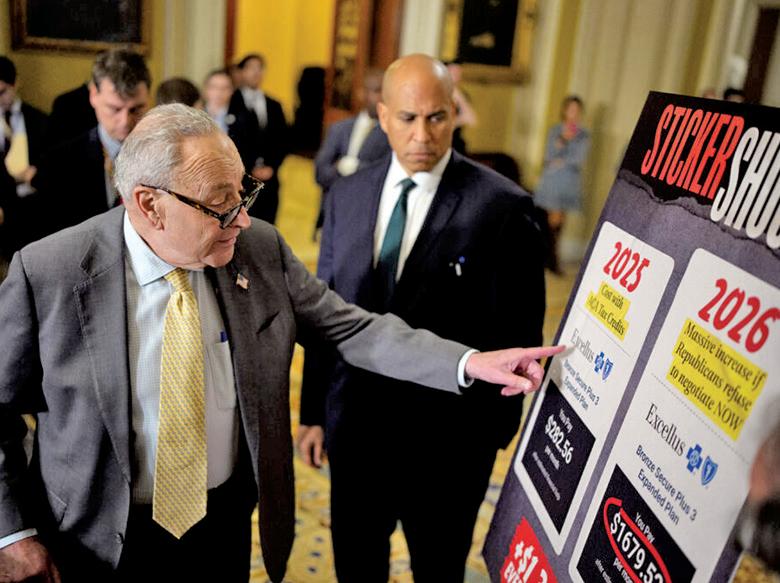
‘It’s a blame game’
Missouri health premiums to rise as much as 30% for 2026 amid uncertainty over subsidies
By Rudi Keller and Steph Quinn Missouri Independent
ost individual health insurance plans sold in Missouri will increase in price next year even as customers prepare to dig deeper into their own funds to replace costs previously covered by federal tax credits.
The state Department of Commerce and Insurance on Friday released the approved rates for individual plans, most of which are sold on the health insurance marketplace. One carrier, Blue Cross Blue Shield of Kansas City, is lowering premiums an average of 4.1% for its plans available in 30 western Missouri counties. Some plans offered by the company will see an increase of as much as 9%.
October is over,
By Khalilah Archie Dallas Weekly
October is over, breast cancer awareness is not
Every October, the world turns pink. Logos change color, ribbons multiply, and companies release limited-edition “awareness” collections. For some, it feels like empty marketing—a season of performative solidarity that fades as soon as the calendar flips.
But for Black women, awareness isn’t just branding. It’s a lifeline. Behind every pink ribbon is a statistic that doesn’t get enough airtime: Black women are 40% more likely to die from breast cancer than white women, even though we’re diagnosed at roughly the same rate. We’re also more likely to be diagnosed younger and with more aggressive forms of the disease. Those numbers aren’t abstract—they’re names, families, and futures cut short.
That’s why awareness—real, informed, intentional awareness—still matters. It’s not about optics. It’s about access.
When awareness campaigns are done right, they create connection points that save lives. They bring mammogram vans to neighborhoods where
See AWARENESS, A8


Make an appointment and keep it
Black women are 38 percent more likely to die from breast cancer than white women
By Deborah Bailey AFRO Contributing Editor
Laurene Scott, like many women, didn’t follow through on scheduling or showing up for mammogram appointments during the Covid-19 pandemic. That in itself was not unusual. Many Americans delayed required health screenings during the pandemic. But Scott never returned for breast cancer screenings after missing her 2021 mammogram. Even when the pandemic ended. Even though she works in the healthcare industry. And even though she is a faithful Seventh-day Adventist, a faith community known for health-focused practices. Scott was a routine “ghoster.”
The overall death rate for breast cancer has dropped 44 percent from 1989 to 2022.
“Yes, I received notices each year to schedule my mammogram,” said the healthcare manager. “But I just didn’t go through with it. I knew I needed to, especially with my family history, but I couldn’t go through with it. I was busy with life and put it out of my mind,” said Scott, who moved to downtown See CANCER, A8
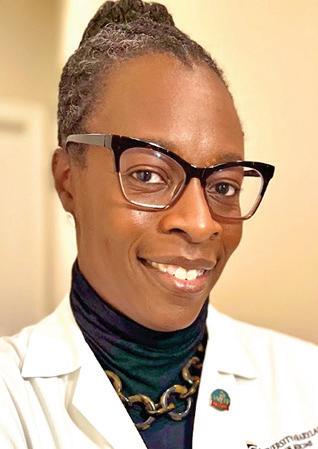
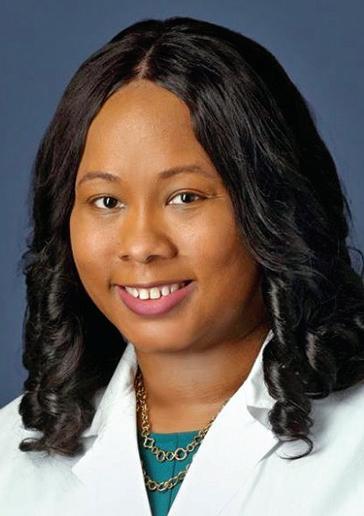
Photo by Andrew Harnik / Getty Images / Courtesy Missouri Independent
Photo courtesy of American Cancer Society (left image) and University of Maryland Medical Center
Dr. Shauna O. Ntiri (left), of the University of Maryland Medical Center, and Dr. Kristin C. Whitaker, medical oncologist with Medstar Washington Hospital Center, are both familiar with the anxieties women have regarding breast imaging.
Democratic U.S. Sen. Chuck Schumer of New York, accompanied by Democratic U.S. Sen. Cory Booker of New Jersey, points to a poster depicting rising medical costs if Congress allows the Affordable Care Act tax credits to expire.
Scan QR code to take our survey on breast cancer.
Cancer
Continued from A7
Washington and got married within the last three years. Given a family history of breast cancer, Laurene didn’t need anyone to tell her the importance of breast imaging. She was better informed than many.
“Yes, self-breast exams are helpful and necessary, but by the time you find a lump on your own, often it has already progressed past what breast imaging can identify,” said Scott.
Although overall deaths from breast cancer have decreased in the United States, the incidence of breast cancer has risen, according to an October 2025 report by the American Cancer Society. Moreover, the Black-
Insurance
Continued from A7
Premiums will increase for the other eight carriers offering plans in all or part of the state. Ambetter Health plans, available off the marketplace in 109 counties, will increase an average of 1.9%, while Cox Health Plans, available in five southwest Missouri counties, will go up an average of 30.4%.
The costs for some Missourians will increase 70% or more if Congress does not extend tax credits enacted during the COVID-19 pandemic.
The federal government has been shut down since Oct. 1 because congressional Democrats refuse to vote to fund the gov-
White gap in the percentage of women diagnosed with breast cancer stubbornly persists, based on data from the report.
The overall death rate for breast cancer has dropped 44 percent from 1989 to 2022. But that’s where the victory lap ends for Black women, said Dr. Shana O. Ntiri, family medicine physician with the University of Maryland Medical System and assistant professor in the University of Maryland’s Department of Family and Community Medicine. Ntiri echoed what is etched in the literature – Black women are 38 percent more likely to die from breast cancer than white women.
Ntiri is familiar with the phenomena of “ghosting” or failing to schedule and show up for mammograms and additional
ernment until Republicans add an extension of the credits to the spending bill. Republicans argue the government should be reopened before negotiations over subsidies resume.
Premiums will increase for the other eight carriers offering plans in all or part of the state.
There are at least two companies offering health plans in every county, with a handful in the St. Louis area seeing seven vying for their business.
“First and foremost, Missourians need to know our state continues to have a competitive market, which means they will continue to have meaningful choices when it comes to their health coverage,” Angela Nelson, department director, said in a news
HealthMattersHealthMattersHealthMatters
‘Taking Care of You’
breast cancer imaging.
“Women who receive care in my practice know they are going to get a call from me to schedule their annual mammogram. It’s critical for that partnership to exist between a family practitioner and cancer specialists,” Ntiri said.
“Women and especially Black women are busy taking care of work, home, family and are often involved in their communities. We often take care of ourselves last. Sometimes women have anxiety about everything involved with breast screening from the equipment, the technicians, the entire process,” she said of the possible reasons for women not showing up for appointments.
A September 2025 study done by Massachusetts General Hospital radiologist Dr.
release.
In addition to reporting the average change, the department also provided the largest change in cost for any single plan offered by the nine carriers. Those increases ranged from 6.4% for an Ambetter Health plan, to 110% for a Medica plan offered in 54 counties.
Open enrollment for the individual health plans begins Saturday.
Consumers who purchase coverage by Dec. 15 will have it start Jan. 1. Plans may be purchased until Jan. 15, but coverage will not begin until Feb. 1, the release stated.
Missourians will start considering their choices without knowing whether enhanced subsidies enacted during the COVID-19 pandemic emergency will

Randy C. Miles concludes that lower levels of assessment or breast imaging and screening is one of the factors accounting for Black women’s higher rate of breast cancer diagnosis at later stages, in comparison to other women in the United States.
A melancholy ending Scott finally scheduled and kept her mammogram appointment in mid-October.
“I was so proud of myself for finally doing it. The process went more smoothly than I imagined,” she said. But the results still left her a bit anxious. “I got a letter saying I had dense breasts, and the exam didn’t detect anything. At the same time, because I have dense breasts, they couldn’t rule out a problem either.”
be extended.
The original Affordable Care Act subsidies that took effect in 2014 tied the actual cost to consumers to a percentage of their income for people earning less than four times the federal poverty level.
Consumers with poverty level income — $15,650 for 2025 for individuals, $32,150 for a family of four — paid 2.1% of their income as premiums, sliding up to 10% for households with income between three and four times the poverty level.
The enhanced tax credits put a cap on outof-pocket premium costs for all consumers, with the highest earners paying 8.5% of their income and those with incomes below 150% of poverty level paying no premiums for their insurance.
“There is still a tremendous amount of uncertainty about whether Congress will extend the premium tax subsidies into 2026, and we are keeping a close eye on any developments at the federal level,” Nelson said.
Only two of the eight companies offering individual plans in Missouri through the federal marketplace will have plans available in every county or almost every county in the state.
The average monthly premium is about $755 for both the United Healthcare and Ambetter offerings, an increase of about 15% and
Awareness
Continued from A7
healthcare deserts exist. They encourage women to ask questions about their bodies, their family history, their risk. They turn fear into conversation, and conversation into action.
For Black women, that action is critical. We live at the intersection of medical bias, misinformation, and generational silence. Too often, our pain is minimized, our symptoms are dismissed, and our trust in the healthcare system is fractured. Awareness doesn’t fix all of that— but it opens the door. It reminds us that our lives are worth early detection, worth advocacy, worth care that sees us.
Still, there’s a valid frustration when Breast Cancer Awareness Month becomes commercialized. When pink ribbons are slapped on products with no connection to real change—when it feels like “pretty marketing” instead of meaningful impact—it can cheapen the cause. But that’s not a reason to abandon awareness; it’s a reason to reclaim it.
Because the pink ribbon isn’t the problem. The
According to the National Cancer Institute, a mammogram may be more likely to miss detecting cancers in women with dense breasts.
Scott said she bears a small but lingering uneasiness over the ambiguous report.
Dr. Kristen C Whitaker, a board certified medical oncologist at MedStar Washington Hospital Center, said she understands Laurene’s caution but assured her and the 5-10 percent of women who have an inconclusive result after a mammogram.
“What we oftentimes find on follow-up imaging and biopsies are normal breast tissue, benign (non-cancerous) breast findings, such as cysts, papillomas, etc. Other times, we find benign findings that are high risk lesions that are not
25%, respectively.
An individual with an income of $62,600 a year or more would have to pay the full premium if the enhanced credits are not extended. That means paying $9,060 over a year for the average Ambetter or United Healthcare plan instead of $5,321, an increase of 70%.
Sheldon Weisgrau, vice president for health and policy advocacy at the Missouri Foundation for Health, said higher premiums could lead younger, healthier people to forgo insurance, driving up prices for those who continue to purchase plans.
“When folks can’t afford to buy insurance, it doesn’t mean they won’t get sick,” Weisgrau said. When they do enter the health system, providers pick up the cost, “and again, that eventually gets passed on to everybody else.”
As Missourians confront higher insurance premiums, 650,000 low-income residents of the state could also be forced to cope with a loss of federal food benefits, with the Supplemental Nutrition Assistance Program, or SNAP, set to run out of funding on Nov. 1.
Panelists on Thursday said instability across federal safety net programs means communities will have to fill in the gaps through mutual aid.
“I think the neighborhood, the village, needs to
problem is when corporations wear it louder than the communities it’s supposed to protect.
The power of awareness lies in who tells the story. When Black women lead the conversation—when we’re the ones designing the campaigns, sharing the statistics, holding the health fairs, and telling our stories—awareness becomes activism. It becomes cultural education and community care.
Look at groups like the Sisters Network Inc. the Tigerlily Foundation, or Black Women’s Health Imperative—organizations built by and for Black women who understood that visibility could mean the difference between life and death. Their work isn’t performative; it’s preventive. And then there’s the personal side of awareness: the emotional courage it takes to say, “Check your breasts.” Those words might seem simple, but for Black women—who are often taught to put everyone else first—they’re radical. They’re a reminder that self-preservation is not selfish.
That act of self-care is what saves lives. It’s what turns fear into empowerment.
cancer but can increase risk of developing breast cancer. Knowing about these lesions are important because there are interventions that can be recommended to lower the risk of subsequent breast cancer development.”
Scott is one Washington, D.C., woman who finally went for her mammogram just in time. Sadly, her cousin recently received a breast cancer diagnosis. “She’s younger than me, kept her appointments and dense breasts were masking her cancer,” Scott said.
The D.C. professional is now one of the many thousands of Black women who will be “busy taking care of family,” as Dr. Ntiri described. But from now on, she knows to “just keep the appointment” regarding her own breast health.
be recreated,” said Shellie Robinson, one of the community members.
Panelists said policy conversations don’t address the difficulty of accessing safety net programs even when they are not being cut or suspended.
Shanelle Woods, who went on medical leave after being diagnosed with an autoimmune disease, said she struggled so long to prove she was eligible to receive disability benefits that she eventually had to go back to work. Her doctors vouched for her, but, Woods said, “it still wasn’t enough.”
“Who has the time to wait online or wait on a call for nearly three hours to talk to someone, to get it?” Woods asked. Timothy McBride, a health economist at Washington University in St. Louis, said that despite a “myth” that people who buy marketplace insurance plans are “undeserving, or they’re lazy,” many working people don’t have access to affordable insurance. Older adults who don’t qualify for Medicare – for instance, due to a chronic condition – may also need marketplace plans.
“There are flaws in our insurance markets that put people in this situation,” McBride said. “That’s the truth of the matter, and you don’t hear that from Washington. It’s a blame game.”
The first time many Black women even hear about mammograms isn’t from their doctor—it’s from another Black woman. A friend, a church member, a sorority sister, a cousin. Awareness travels through us. It’s braided into our conversations, our communities, our traditions of care. And that’s why every pink light, every ribbon, every survivor’s story matters. Because somewhere, a woman who thought she didn’t have time for herself might finally make that appointment. Somewhere, another woman might find comfort in seeing someone who looks like her on a poster, on a panel, or on a stage, saying, “I made it through. You can too.” Awareness can’t end with October. It has to live in our routines—in the way we check on our friends, the way we demand equity in research funding, and the way we support survivors long after the chemo ends.
So yes, the world might look a little too pink this month. But I’ll take that over a world that doesn’t see us at all. Because for Black women, pink isn’t performative. It’s power.
Accuser lawyer claims Russell Simmons’ settlements have been ‘resolved’

A legal representative for three individuals who accused Russell Simmons of sexual assault or misconduct responded to a recent Rolling Stone feature entitled, “Owed Millions to His Accusers. Have They Finally Found Justice?”
According to the story, the hip hop mogul agreed to pay $11M to multiple women. The article poses the question, “Two years later, has he followed through on the payments?”
The magazine’s website said that two days after Rolling Stone sent Russell Simmons questions for the article, a lawyer for three of the accusers told Rolling Stone: “The matter has been resolved.” According to Rolling Stone, the attorney declined to provide any additional details. The music magazine also said that Russell Simmons, through one of his attorneys, offered no comment.
Rapper accuses Spotify of using bots to boost Drake’s music
Rapper RBX claims streaming giant Spotify turned a blind eye to fraud. He alleges that bots boosted the streams of songs performed by superstar Drake, according to a fed eral class action lawsuit filed Sunday.
NBC News reports that the suit names RBX as an individual plaintiff – and “on behalf of other members of the general public similarly situated.” He claims that from January 2022 through September 2025, Drake’s songs have benefited from “billions of fraudulent streams” generated by fake users, or bots, on Spotify. The suit was filed in the U.S. District Court for the Central District of California.
him to forfeit nearly $65 million in assets. The hip hop news outlet says Michel must surrender $64 million in assets by a federal judge. Allhiphop. com says the ruling is part of his conviction tied to a sprawling international bribery and money-laundering case involving Malaysian financier Jho Low.
The ruling, issued October 30, came as Michel recovers from emergency colon cancer surgery –which delayed his sentencing.
Did A$AP Rocky and Rihanna secretly wed?
Last month, Harlem rapper, model and actor A$AP Rocky hinted at being married to pop star and beauty business mogul Rihanna in an interview with Elle Magazine. In a Perfect Magazine feature, Rocky refers to himself as a “loving husband.” “Being a father and a partner and a loving husband in my family is what makes me really, really happy,” Rocky told the magazine. “I hope this doesn’t sound cliché, and I would hate if it does, because that’s what honestly does get me going: being able to express myself creatively, being able to be a family man and being able to be an artisan.”

D’Angelo laid to rest in Richmond
A private funeral was held for D’Angelo over the weekend. The service was held on Saturday, November 1 in the late singer/songwriter’s hometown of Richmond, Virginia.
Stevie Wonder, Ms. Lauryn Hill and DJ Premier were among those in attendance.
“The more users (including fake users) Spotify has, the more advertisements it can sell, the more profits the company can report, all of which serves to increase the purported value delivered to shareholders” the suit says. “This mass-scale fraudulent streaming causes massive financial harm to legitimate artists, songwriters, producers and other rightsholders whose proportional share is decreased as a result of fraudulent stream inflation on Spotify’s platform.”
The lawsuit does not allege that Drake did anything criminal.
Pras ordered to hand over $64M in assets
Two years ago, Fugees rapper Pras Michel was convicted on charges of conspiracy to launder money for fugitive Malaysian billionaire Jho Low Allhiphop.com reported that a recent ruling ordered
MSN.com reported that Wonder and D’Angelo’s former bands, The Soultronics and The Vanguard performed musical tributes during the celebration of life service. The Grammy-winning artist sang “If It’s Magic,” “The Lord’s Prayer,” along with accompaniment from harpist Brandee Younger, and “As” with the bands.
The intimate service – described as a family-centered gathering – was said to have included a private viewing followed by a burial ceremony.
“Through music, love, and light, Michael D’Angelo Archer’s spirit will shine forever,” the funeral program read.
The soul crooner passed away on October 14 after a bout with pancreatic cancer. He was 51. Sources told Allhiphop.com that fans will have their chance to pay respects at a public memorial planned for next year.
Sources: Rolling Stone, NBC News, Perfect Magazine, Allhiphop.com, MSN.com

















Russell Simmons
The St. Louis American’s award winning NIE program provides newspapers and resources to more than 8,000 teachers and students each week throughout the school year, at no charge.
area teachers and students each week throughout the school year, at no charge.
Questions or comments? Contact Cathy Sewell csewell@stlamerican.com or 618-910-9551
Questions or comments? Contact Cathy Sewell csewell@stlamerican.com or 618-910-9551


CLASSROOM SPOTLIGHT

are learning how to construct a series circuit.
data (percent, average and graphing) using Skittles.
by Cheryl Christian
Students at The American’s Summer Science Academy work in teams to discover the many different computer programming languages.
SCIENCE CORNER


SCIENCE CORNER
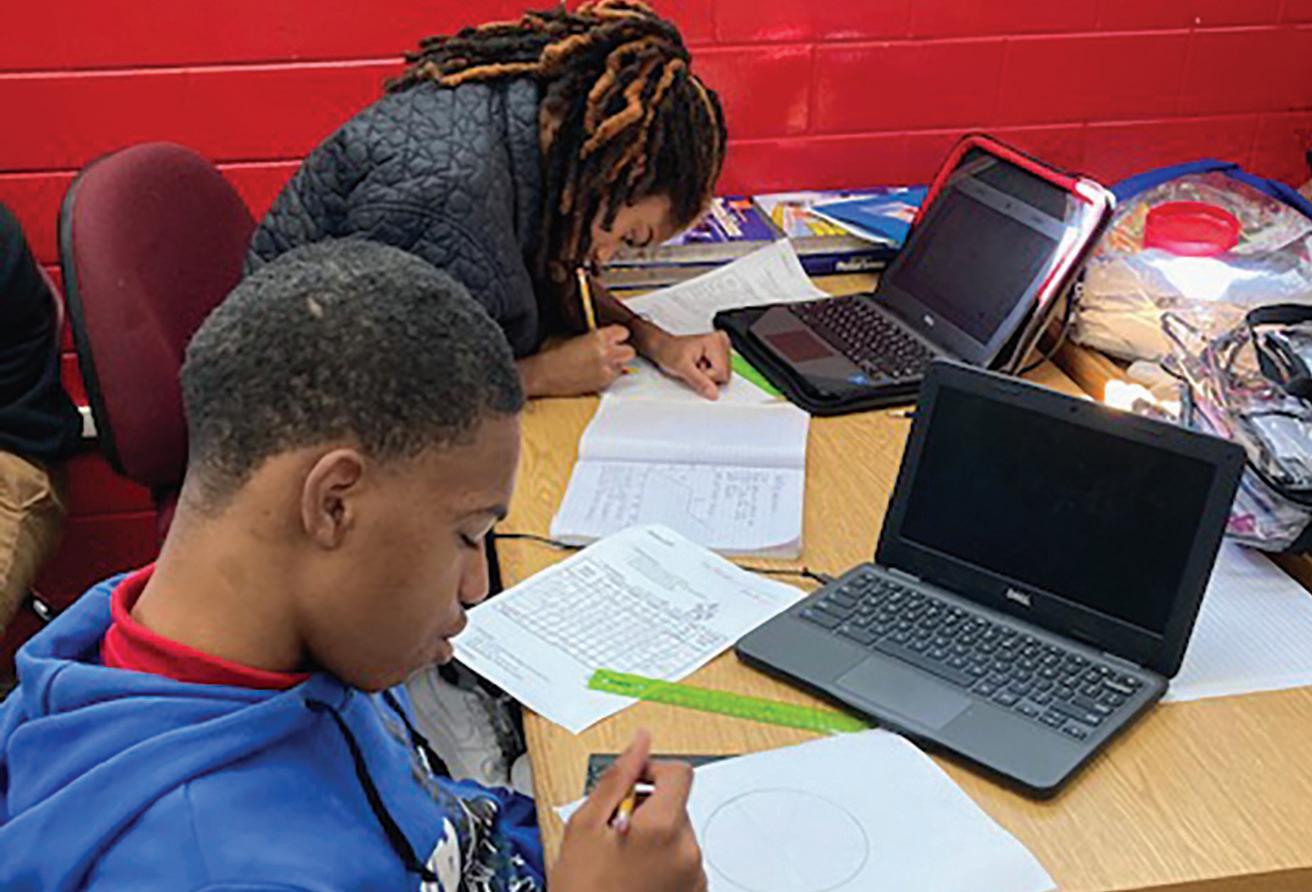




African American Meterologist William “Bill” Parker

Imani Black: Protecting the Ocean, Inspiring the Future
AFRICAN-AMERICAN MYCOLOGIST AND EDUCATOR: Jeanette Jones



Imani Black is a marine scientist who loves the water and the animals that live in it. She grew up on Maryland’s Eastern Shore, where she spent a lot of time near the Chesapeake Bay. From a young age, she was curious about nature and how people could help protect it. That curiosity grew into a passion that led her to a career in fish and wildlife conservation.
Jeanette Jones was born on September 19, 1950, in Fort Valley, Georgia. Jones graduated from Fort Valley State University in 1972 with a bachelor’s degree in biology education. In 1973, Jones received her master’s degree in botany and mycology (a branch of biology that studies fungi) from The Ohio State University. In 1976, she received her doctorate (Ph.D.) degree.
William (Bill) Parker grew up in New Orleans. He graduated from JFK High School, which focused on math, science, and engineering. Parker was interested in hurricanes at a young age, but he became interested in the weather after a high school statistics class. In this class, he learned how to predict the chance of rain. Parker wanted to attend a historically black college/ university (HBCU), so he chose Jackson State University to study meteorology. He graduated with his bachelor’s degree, in 1994.
What is a stroke? When the brain is flooded with blood and can’t get oxygen, it is a stroke. Strokes can cause sickness, brain damage, muscle weakness, and even death. During a stroke, a person will often experience numbness on one side of the body, a bad headache, dizziness, loss of balance, and difficult speaking. It is important to get help immediately.
A hurricane forms over tropical and subtropical ocean water. Warm water and cool, moist air combine to create strong winds that can gust up to 200 miles per hour! These winds create waves that bring the storm on shore. Hurricanes are very destructive. They can flip cars, sink boats, uproot trees, and demolish houses.
SCIENCE CORNER


In addition to powerful winds, hurricanes bring a lot of rain. (Taiwan received 114 inches of rain in three days during a hurricane.) These rains can cause landslides and flash floods.
Sometime, strokes can be treated with medicine or surgery.

SCIENCE INVESTIGATION

Fungi are organisms made of filaments (called hyphe) that are stacked together. Unlike plants, fungi do not have chlorophyll, so they cannot make their own food. Some fungi are parasites, which mean they live off of other organisms. Some fungi feed off of dead and decaying matter. Fungi are everywhere in the environment, including the soil, lakes, river and seas, air, and on plants and animals. Fungi (plural of fungus) help organic matter to decay and release carbon and oxygen into the environment. Unlike plants, fungi do not have
There are two main types of strokes: ischemic and hemorrhagic. Ischemic is caused from a blocked blood vessel. This blockage may be from a clot or a clogged artery. Hemorrhagic is caused when a weak or thin blood vessel bursts and blood spills out. High blood pressure weakens blood
In this experiment, you’ll create a replica of a hurricane and identify how the forces work together to create a hurricane.
SCIENCE INVESTIGATION

vessels and is usually the cause of hemorrhagic strokes.
Fungi ?
Hurricanes can last a few hours or several days. Most hurricanes occur during the fall months. How can you stay safe? Have an evacuation plan and an emergency kit prepared. Meteorologists can track these storms and keep you informed. For more hurricane facts, visit: http://www.sciencekids.co.nz/ sciencefacts/weather/hurricane.html.
leaves, stems, or roots. Fungi use spores to reproduce. One common type of fungus is the mushrooms you find on your pizza. Mold, yeasts, and mildew are also types of fungus.

In
Materials Needed:
• 2 Soda Bottles • 3 Paper Clips
• 3 Peanuts • ¼ C. Sand • Funnel
• Water • Duct Tape
Materials Needed:
Procedure:
•
q Fill one bottle with the paperclips, peanuts and sand. These represent the debris and help make the movement of water easier to see.
Process:
q Wet
w Place the funnel in the mouth of the bottle and pour water into the bottle until it is 3/4 full, then remove the funnel.
q
w
the
e Turn the second empty bottle upside down and hold it over the first bottle so that the mouths of the bottle are aligned. The bottles will look like an hourglass.
w Place your items in the box.
e Place the bag with the wet slice of bread and one of the bags with a dry
of
r Tape the seam, pressing the duct tape firmly to

in a dark place, such as a closed cabinet or closet.

r Place the third bag with a dry slice
Flex those brain muscles as you answer these word problems!
MATH CONNECTION

Scientists often use tables and graphs to display the results of their research. Looking at these displays, you can draw conclusions.
As
approach

DID YOU KNOW?

Imani studied marine biology in college, learning about the science of fish, oysters, and the health of the oceans. After college, she worked for oyster restoration programs, projects that help bring oysters back to the Chesapeake Bay. Oysters are very important because they filter the water and provide homes for other sea creatures. Thanks to people like Imani, the bay’s oyster population is slowly improving, which helps the whole ecosystem stay healthy.
For More Information, Go to: https://kids.kiddle.co/Fungus Learning Standards: I can read nonfiction text to gain background information about fungi.
Doctors can diagnose strokes by using MRI imaging and CT scans. In order to prevent strokes, it is important not to smoke. This weakens your blood vessels and your immune system. Eat healthy. Limit fat intake and eat a lot of whole grains to keep your blood vessels clear from plaque. Be active. Regular, physical activity keeps your blood vessels healthy and strong. Check your blood pressure and keep an eye on diseases such as cholesterol, diabetes, and heart disease
Learning Standards: I can read nonfiction text for main idea and supporting details.
Learning Standards: I can read nonfiction text for main idea and supporting details.
create a watertight seal. Continue taping 1 to 2 inches above and below the seam.
Growing Mold!
t Hold the bottles by the middle and lift the jugs.
But Imani’s story doesn’t stop there. She noticed that not many people in marine science looked like her or came from similar backgrounds. Instead of letting that discourage her, she decided to take action. In 2020, she founded Minorities in Aquaculture (MIA), an organization that helps women of color learn about aquaculture, which means farming fish and shellfish in water. Through MIA, Imani teaches and mentors students who dream of working with the ocean but might not know where to start.
She also studied at the University of Nevada, the University of California Medical School, the National Center for Disease Control-Atlanta, and the Massachusetts Institute of Technology. After graduation, Alabama A&M University hired Jones as an assistant biology professor. In 1986, she served as an adjunct professor in the College of Pharmacy and Pharmaceutical Services at Florida Agricultural and Mechanical University and worked on a project with NASA. In 1991, Jones served as the first female vice president of research and development at Alabama A&M University. She also served as President of Alabama A&M University’s Faculty Senate from 2001 to 2006. In 1992, she was appointed to the U.S. Army Science Board by the U.S. Secretary of the Army, Togo West. Since 2004 Jones has been the director of the Center for Biomedical, Behavioral, and Environment Research at Alabama A&M University. She also worked as a consultant with federal agencies to help them develop training programs to attract women and minorities to STEM education and careers.
Imani’s work has earned her national attention and awards. She has spoken at schools and conferences across the country, encouraging young people to follow their passions and protect the environment. She believes that anyone, no matter where they come from, can make a difference in science and conservation.

e Ask a volunteer to place a sock on their hand. They will place their hand in the hole and see how many items they can identify in the box.
y Quickly, turn the bottles over so that the water-filled bottle is on top. Set the bottles on the table again.
r Next, the volunteer will repeat step 3 without the sock. Are they more successful identifying objects without their sense of touch affected?
i Turn the bottles over again. This time, shake the bottles in a circular motion. Be sure to keep the bottles vertical.
t For five days, measure the square centimeters of mold on each piece of bread through the bag. Use a grid, if possible, or a ruler. If mold covers more than half a square centimeter, it is counted as one full centimeter. If it is less, it is counted as 0 centimeters. This will give you the area of mold on each slice of bread y At the end of a week (5 days of measuring) or longer, use your final results to say what percentage of the bread was covered in mold. Make a table or graph to display the information.
u Observe the water as it drains into the bottle below. The water competes with the air from the empty bottle. Both substances push to pass through the neck.
t Finally, take the lid off the box and allow the volunteer to see all of the items.
o The water will form a vortex as it drains into the next bottle. The water will flow along the outside of the neck, while air moves quickly up through the center of the vortex. The water will drain much faster.
Analyze: How did water and air create a hurricane?
Analyze: How does the sense of sight and touch work together?
Learning Standards: I can follow sequential directions to complete an experiment. I can analyze results and draw conclusions.
z A fifth grade class sold 250 tickets to a play. They sold 160 adult tickets at $7.50 each, and 90 children’s tickets at $5.00 each. They donated ½ of the money to charity. How much money did they donate? ______ x Jim, Carla and Tommy are members of the same family. Carla is 5 years older than Jim. Tommy is 6 years older than Carla. The sum of their three ages is 31 years. How old is each one them? ______
Discussion Questions: How much mold was on the bread? Which location had the most mold? Which had the least? What conclusions can you draw about the conditions in which mold grows? How can food manufacturers and restaurant owners use this information to help them?
Learning Standards: I can follow sequential directions to complete an experiment. I can make observations and draw conclusions.
Learning Standards: I can follow sequential directions to complete an experiment. I can display my results, make observations, and draw conclusions.
Analyzing
a Bar Graph
v A painter charges $250 for materials and $35 per hour for labor. The total cost of painting an office is $372.50. How many hours did it take the painter to paint the office? ______
c How many minutes is in one week? ______ How many minutes are in one month? ______
Discussion Questions: Which day had the most measured rainfall? Which day(s) had the least? Looking at the bar graph, what might you conclude about rain patterns in March/April? What other observations can you make?
Learning Standards: I can use a bar graph to display information. I can use the information to make deductions and inferences.








In 1993, he began to gain experience in the field when he worked as a student meteorologist. One year later, he was a meteorologist intern at Shreveport. In 1998, Parker became a general forecaster, and ten years later, a lead forecaster. In 2012, he became a warning coordination meteorologist (WCM). There are only 122 people with this title in the United States, and Parker was the only African American. Parker is currently the meteorologist-in-charge (MIC) at the National Weather Service, leading a team of 26 weather professionals. Parker is also very active as a volunteer in his community. He is a member of the Shreveport-Bossier Mayors’ Prayer Breakfast Executive Committee, La Cima Bilingual Leadership Academy, Bossier Chamber of Commerce Education Committee, Volunteers for Youth Justice, and a coach for Bossier Parks and Recreation. Parker is also an associate minister at Elizabeth Baptist Church in Benton, where he has been serving the congregation since 1997.

Imani Black’s journey shows that caring for nature and believing in yourself can lead to amazing things. She inspires students to explore the outdoors, ask questions about how the world works, and use their curiosity to help the planet.
As Imani says, “You belong in this space, too.” Whether it’s studying the ocean, protecting animals, or growing the next generation of scientists, her story reminds us that the future of our planet is in all of our hands.
In 1975, Jones was listed in the World’s Women’s Who’s Who and she was named an Outstanding Young Woman of America in 1978. Beta Beta Beta National Biological Honor Society awarded her the distinguished service award. Jones also received the Significant Service Award from the NASA Space Life Sciences Training Program and the Extramural Associate Research Development Award from the National Institute of Health. In 1990 and 2006, she was named Woman of the Year at Alabama A&M University and was given the Outstanding Leadership Award by the Faculty Senate. The U.S. Army presented Jones the Commander’s Award for Outstanding Civilian Service as a member of the Army Science Board.
ELA Questions:
Imani Black saw a problem in her field and decided to take action by starting her own organization. What is one problem you care about in your school, community, or the environment, and what is one way you could help solve it?
Discussion Questions: Dr. Jones received many awards and honors. How would you describe her achievements and her contributions to science? Dr. Jones is studying how fungi might be used as agents of war. What purpose do you think fungi serve in modern warfare? Are fungi beneficial or harmful?
Learning Standards: I can read a biography to learn about an African American who has made contributions in science, math, technology, or engineering.
Parker believes in serving as a role model to the youth and to recruiting African Americans in the STEM field. Personally, he has hired three African-American meteorologists. In addition, he has recruited minorities for summer intern positions. Parker has also mentored an Airline High School student for his senior project. Parker’s advice to students interested in meteorology is to take as many math and science classes as possible. Learn about summer opportunities in your community. If you are interested in meteorology, visit National Weather Service offices and serve as a volunteer or intern, and find leaders in your community to serve as your personal role models.
In the article, the word “ecosystem” is used when describing the Chesapeake Bay. Based on the sentence, what do you think “ecosystem” means?
Learning Standards: a person who has made contributions to the fields of science, technology,

Use the newspaper to complete the
MAP CORNER


Types of News:
Enjoy these activities that help you get to know your St. Louis American newspaper.
Enjoy these activities that help you get to know your St. Louis American newspaper.
Activities —
Use the front section of the newspaper to evaluate the types of news stories presented: local, national, and international. Sort the articles into the three categories and create a bar graph that

Help Wanted: Read the classified ads and find a job that lists a salary. Calculate the hourly wage, daily wage, weekly wage, monthly wage, annual wage and wages over a three year period.
Activities — Who works where? a picture of a building in the newspaper and of jobs people who work in that building could have.

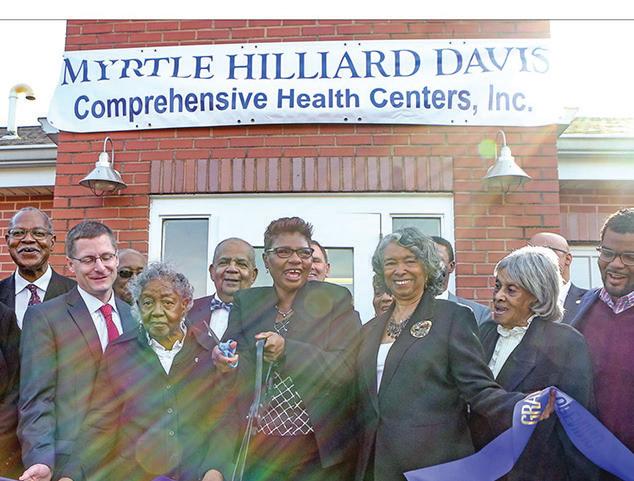

Editorials: Find examples of editorials that were written to inform the reader, interpret the news for the reader, entertain the reader, and persuade the reader. As you read the editorial, underline the facts and circle the opinions.


Learning Standards: I can use the newspaper to locate information. I can identify author’s purpose. I can add, subtract, multiply, and divide to solve a problem.
Mystery Story: Cut out several pictures from the newspaper without reading the caption. Place the pictures in a bag, and without looking, pick your mystery picture from the bag. That’s your stimulus for writing. Construct a graphic organizer to identify the 5Ws (who, what, when, where, and why) of your story by looking at your picture. Then, continue the writing process.
Problem and Solution: Over a period of weeks, clip articles from newspapers that deal with problems and issues facing your local or county government. Discuss the reasons for these problems and how the government hopes to solve them.
Learning Standards: I can use the newspaper to locate information. I can categorize and summarize that information.
Learning Standards: I can use the newspaper to locate information. I can discuss problems and solutions. I can identify types of jobs. I can make text-to-world connections.






Penicilllin mold commonly grows on fruit
caterpillar fungus has been used
Students Aariyah Thompson and Savannah Fisher, in Ms. Stovall’s firstgrade class at Gateway MST Elementary School,
Photo by Ms. Stovall
Students Kadon Harbor and Khloe Sykes, in Ms. Cheryl M. Christian’s 9th grade class at Jennings Senior High School, analyze
Photo
Food insecurity is deepening in the St. Louis area as a record-breaking federal government shutdown disrupts the SNAP program that allows low-income families to buy food, straining local food banks and families already on the edge. As the shutdown nears the end of week five, the Trump administration approved only half of November’s SNAP benefit, after a federal judge ordered the government to continue payments. In Missouri, 655,000 residents depend on SNAP benefits, including more than 47,000 households in St. Louis County. Nationally, 42 million people rely on the program.
Cities and nonprofits have gone back to court to try to force the administration to pay the full SNAP benefit, not just half, for November, The New York Times reported.
At food pantries across the region, demand has surged as furloughed federal employees join the growing number of
Green
Continued from A1
Being dramatic and newsworthy are the ingredients of Green’s activism.
In 1964, concerned about racial disparities and workers’ rights, Green joined CORE (Congress of Racial Equality), the group that mainstreamed the Jefferson Bank protests. However, he became frustrated with some of the group’s leaders whom he felt were making “backdoor deals” amid negotiations for jobs and fairness.
He also felt it wasn’t time to ease up after the bank agreed to hire Black people.
“We had the momentum and the attention,” Green told Take Five magazine in 2002, “so we felt that we needed to go ahead and hit something else.”
He and a few other activists decided to form another organization (ACTION) that would “carry on with negotiations, but our main shtick would be civil disobedience.” Green co-founded the organization, Action Committee to Improve Opportunities for Negroes, in 1965.
Parents
Continued from A1
Her reaction echoes a growing sentiment among parents and educators who say the district’s leadership changes have become too frequent and too opaque, diverting attention from students’ education.
residents struggling to afford basic groceries.
Organizations such as Empower North County and the St. Louis Area Foodbank report upticks in visits and calls for assistance.
Since 2019, Empower North County has partnered with Trinity Church and the St. Louis Food Bank each month to distribute food to the community from 6:30-8 p.m. The earliest car arrived at 3:15 p.m. for Tuesday night’s drive-thru. With eight pallets of food to distribute, they handed out boxes that contained yogurt, potatoes, trail mix, cabbage, miscellaneous snack bags and dry goods.
Many didn’t make it through the line before there was little left to give, said Melissa Fitzgerald of Empower North County.
She said people have been impacted by the shutdown, but many of the people she has encountered work, but still don’t have enough to feed themselves or their families.
“This isn’t ‘I’m not doing the work.’ ‘I’m lazy.’ ‘I don’t have a job.’ Many of them, they’re working. They’re working
Its core mission was to abolish “the symbolism of racism, sexism and elitism of the city.” In that spirit, he ushered in an in-yourface, disruptive form of protest that brought action, drama and news cameras to the streets.
That approach soon escalated into one of the most dramatic moments in St. Louis activism history. The new documentary, “Percy Green: Man of ACTION,” places viewers smack dab into the moment Green and another activist, Richard Daly, were arrested after climbing 125 feet up the north leg of the unfinished Gateway Arch. The men temporarily held up construction on the site while instigating a form of protest that was different, dramatic and definitely newsworthy.
ACTION continued to take bold stands. The organization declared it was going to “disrupt” the private, high-society organization that sponsored the annual Veiled Prophet Parade and Ball. In 1972, it achieved the unthinkable when white members of the group bought tickets to the ball, climbed the stage and unmasked the
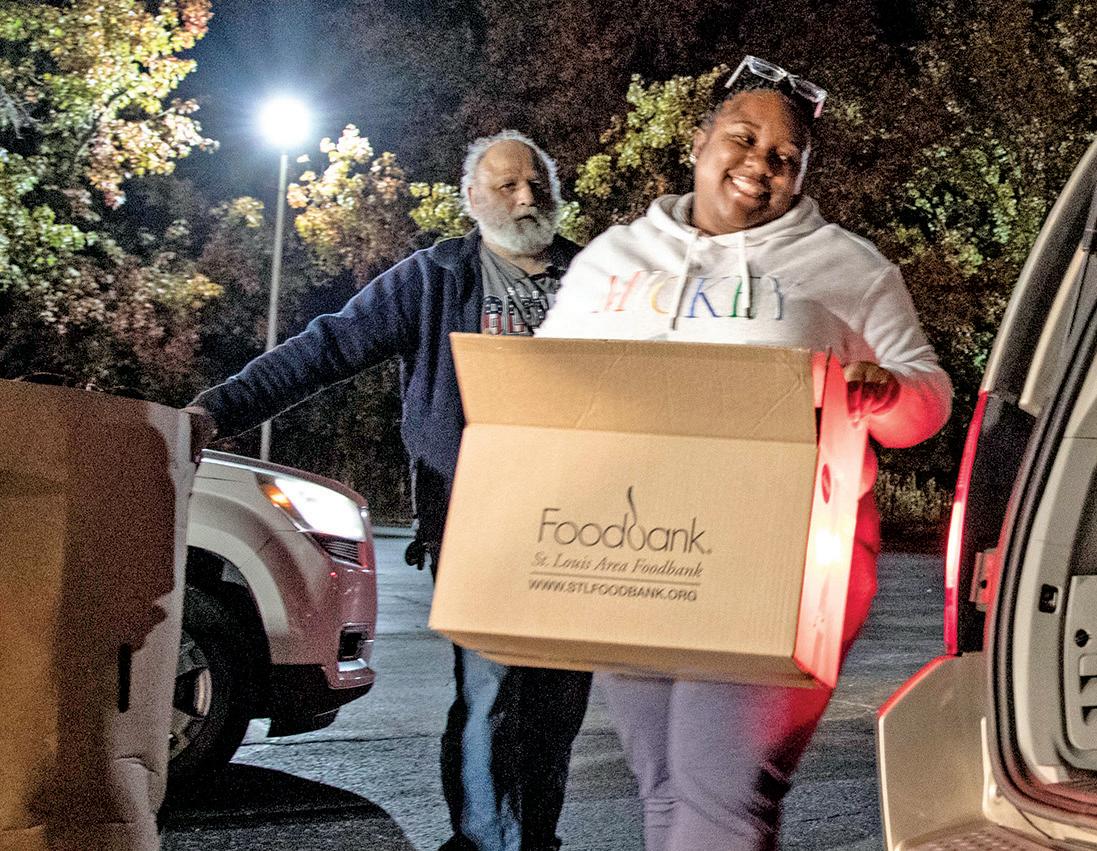
during the day. They’re coming from hospital jobs. They’re coming from hourly paid jobs and after work coming to wait in line at our monthly distributions,” she said.
Tuesday night’s total households served saw a 78.5% increase from the
Veiled Prophet, upending a 98-year-old tradition.
The racially diverse organization continued to make headlines. Under its campaign for “More and Better Jobs for Black Males,” the group targeted public utility companies such as Laclede Gas Company (now Spire), Union Electric (now Ameren) and Southwestern Bell Telephone.
In the early ’70s, ACTION members were arrested after its “stick-in” demonstrations where they entered the telephone company’s downtown office and poured molasses on desks, furniture and floors.
A similar stunt was repeated in the downtown lobby of the gas company where the group spread what was reported to be a mixture of bull, horse, dog and cat manure laced with limburger cheese on the walls, floors and desks of the office.
Though they were never caught by police, ACTION members were suspected of accosting utility company crews working in Black neighborhoods. They were told to hire Black workers or put their safety at risk.
“With acts of civil disobedience, we felt
average number of households served in one night.
A 79-year-old retired veteran from Florissant, who wanted to be identified as “Dave,” didn’t think he’d be in a position to need food assistance. After 50 years of service in special forces, he lives
people could learn how to create pictorial events rather than events you read about in newspapers or see on TV,” Green explained. “It was all about drama. We tried to come up with as many different means of disruption that were as nonviolent as possible yet newsworthy.”
Green’s legacy continues to inspire others who watched his methods transform St. Louis protest culture. Zaki Baruti, 78, founder and President of the Universal African People’s Organization (UAPO), set an example for those with a desire to enact change.
“He was the forerunner for what change should look like,” Baruti said, adding: “The tactics he used, his commitment to uplift the race … I have the greatest respect for him.”
Former St. Louis Fire Chief, Sherman George, 81, who attended Green’s 90th birthday party in late August, called him “my hero” because of his work to employ Black people.
“Percy worked to make sure people had jobs,” George said. “He’s someone I’ve always admired
on a fixed income.
“Food is so high-priced. I can’t afford it. People are out of work and food stamps are gone. It’s just a horrible thing,” said Dave, sporting a Vietnam veteran hat. “I don’t know what those who are on a low Social Security budget are
— at first from a distance — but now I just love to be in his company.”
The “No Kings” protests made headlines. Green said he’s hopeful the example will lead to other forms of protests. Black people, he added, need other specific forms of protest. Mostly because they have to grapple with a whole different set of issues outside the realms of authoritarianism and corruption.
Some of those issues include massive reductions of the federal workforce, where Black women in particular found ample opportunities; the suppression of Black history in schools, libraries and colleges; the reduction of Department of Education Funds for HBCUs and the rolling back of DEI Initiatives.
“Since the white working class has been the beneficiaries of racism, we (must) make them mindful of that. We can’t have one working class taking advantage of another working class,” Green said, emphasizing the need for alternative protesting.
“With civil disobedience, if executed properly, you can get a lot more
doing. This is causing tremendous pain.”
Trinity Church Pastor
Danny Quanstrom says North County is “pretty diverse” and the people he’s seen come through the drive-thru food pantry represents that diversity: “Old, white, Black, young and everything in between,” he said.
Quanstrom said he’s talked to people whose family members work at Boeing and are still on strike after three months and people furloughed from the Department of Defense who are not getting paid.
“I have talked to veterans who are sad that though they gave their lives for the country, they are not receiving enough to sustain them right now,” Quanstrom said. He stresses the importance of making sure the food distribution was set up with dignity to the people in mind.
“If we’re helping them, we want to see them as whole persons,” he said. “They are worthy of dignity. They’re worthy of belonging. They’re worthy of agency.”
done to encourage the adversary to do the right thing as well as making those acts so newsworthy where it educates and enlightens its observers.”
When asked what he thinks his greatest contributions to young activists has been, Green responded without hesitation.
“I think it’s the fact that I have utilized ingenuity in various forms of civil disobedience and nonviolent protests that should grab the attention of observers who can be enlightened to racism while at the same time holding those responsible accountable,” Green said. ACTION was dismantled in the early 1980s. Still, some 40 years later, Green insists the variables of obstruction, political destruction and self-preservation remain the same.
“People in power are going to move in the manner they think is going to serve their best interest. … And we, as a people, must do the same thing to survive … act in our own best interest.”
Sylvester Brown Jr. is the Deaconess Foundation Community Advocacy Fellow.
Wendell Moore, who has three kids attending Hodgen Tech Academy, believes the revolving door in district leadership stems from greed.
scoring ongoing upheaval in the state’s largest urban school district.
“Too many people want to get in and hire other greedy people’s family,” said Moore, who agrees with the dismissal.
Borishade’s removal marks the fifth leadership change since 2022, under-
The district offered few details about why it chose to part ways with Borishade, who was fired “without cause” following a four-hour closed session. Under her contract, she will receive roughly $750,000 in salary and benefits through June 2028.
The SLPS board hired Myra Berry, the district’s interim chief of human resources since 2023, as interim superintendent. Berry has been with the district for more than two decades, serving in both classroom and administrative roles.
Borishade’s tenure, though brief, was marked


by difficult conversations surrounding the restructuring of the district’s aging and partially filled schools. In July, she presented a preliminary report recommending the closure of 37 buildings due to declining enrollment and deteriorating infrastructure. The proposal triggered backlash from the American Federation of Teachers Local 420, culminating in a no-confidence vote against her leadership.
“She should have been fired because she was very one-sided,” said Moore, who says he attended several meetings and believes Borishade’s focus was on “money and agenda.”
Criticism arose when Borishade’s appointment was announced, noting that she was elevated to the permanent role in February without a national or local search.
“There doesn’t seem to be a clear, fair process,” Perry said. “It just seems like people get hired on as an interim and then get hired for the position.”
She hopes the board will conduct a thorough, transparent search for the next leader — someone with both experience and integrity. “Look for someone who has a proven track record of improving districts for all students and who can build trust in the community,” she said.
The repeated turnover at the top, she adds, has taken a toll on parents’ confidence — and on the stability students need to succeed in the classroom.
St. Louis Public Schools serves a student population that is about 77% African American, many from neighborhoods already grappling with inequities. Perry says she’s seen the impact firsthand, from staffing shortages to uneven resources across schools.
“The district has been on a downward spiral for years,” she said. Moore says he has pushed for more than a year for changes in student transportation and better teachers, especially those who work with special needs students.
“The money needs to be given to better programs and should be available for all kids,” he said. “If we have people who destroy schools, then the children have no safe space. We need someone who’s going to be in it for the long haul. There’s so much that needs to be done.”
As SLPS moves forward with its latest transition in leadership, Perry says she’s not just waiting for answers — she’s demanding accountability and consistency from the people entrusted with educating children.
Photo by Lawrence Bryant / St. Louis American
Volunteer Jasmine Kelley loads a box of food into the back of a van during a food drive for families who lost SNAP benefits due to the government shutdown.
Foundation has recognized our heroes of education,” said Raven Whitener, the foundation’s director. “Teachers, administrators and advocates pour their hearts into the success of children in our community.” Foundation Board Chair Michael Holmes echoed her sentiment.
“At a time when so much divides our nation, it’s comforting to see people gathered to honor those who dedicate their lives to creating a better future for our children,” Holmes said. “We thank God for every person in this room who chooses to be a steward of young people’s success.”
The evening was made possible by more than 20 sponsors, including the Urban League of Metropolitan St. Louis, World Wide Technology, Centene Corporation, The Steward Family Foundation, The Regional Business Council, Ameren and The Opportunity Trust.
Mark Stallion of UB Greensfelder and Errin Braddock of Enterprise Mobility served as dinner co-chairs. For Braddock, the moment was personal — his mother, Antoinette “Toni” Bailey, chaired the gala in 1996.
“My mom taught me that making a difference starts with educating yourself and others,” Braddock said. “Tonight is a full-circle moment.
Dr. Suggs, Dr. Fowler, Maxine Clark, Bob Fox and Mary Grimes have all shown me what it means to care fiercely for our kids and their futures.”
Longtime mistress of ceremonies Carol Daniel guided the evening with grace, reflecting on nearly four decades of impact and more than $18 million in scholarships and education grants.
“In 38 years, this salute has honored the region’s most inspiring educators,” Daniel said. “This year alone, we provided nearly
$2.4 million in scholarships — investments not only in education, but in the next generation of leaders, innovators and change-makers.”
The foundation’s scholarships were presented through partnerships with area institutions including Harris-Stowe State University, Maryville University, Saint Louis University, Washington University, Webster University, UMSL, St. Louis Community College, Barnes-Jewish College Goldfarb School of Nursing and SIUEdwardsville.
“Much like the St. Louis American Foundation, Harris-Stowe seeks students with great potential,” said HSSU President Dr. LaTonia Collins Smith. “We bring them from across the nation to explore all the possibilities higher education offers.”
Maryville University
Daniel said. “You are part of a force tonight that is changing the landscape of this city, this county and this nation.”
This year’s educator honorees exemplified outstanding leadership: Dr. Rhonda Key, deputy superintendent, Hazelwood School District; Tambra Pendleton, founding principal, Believe Academy; Dr. Michael Peoples, principal, University City High School; Dr. Michael Triplett, superintendent, Normandy Schools Collaborative; and Erica Williams, assistant school leader, Momentum Academy.
“Education is more important than ever.”
– Erica Williams
President Dr. Daniel Shipp invited Suggs Scholar and thirdyear student Micaiah Johnson to share her story.
“I want to thank the foundation and Maryville University for believing in students who dream big, work hard and want to make a difference,” Johnson said. “Education isn’t about personal achievement — it’s about legacy, leadership and lifting others as we climb. Your belief in us gives us the courage to believe in ourselves.”
SIUE Chancellor Dr. James Minor, a 2023 Stellar Performer award recipient, reinforced the message. “Potential never expires, and perseverance defines excellence,” he said. “We are changing the trajectory of lives — and this community.”
Daniel captured the evening’s energy with her remarks.
“This isn’t just a good feeling because they received scholarships — it is a powerful force,”
“Education is more important than ever,” Williams said. “Our systems are struggling, and resources are limited. Now more than ever, we must depend on one another and serve with heart.”
Maxine Clark and Bob Fox received the Champions in Education awards for their lifelong commitment to equity — including their investment in Teach For America.
“I wouldn’t be here without my teachers,” Clark said. “Our mission has always been to ensure every child has access to quality education. When we work together, one plus one can equal one thousand.”
“Students need culturally relevant education,” Fox added. “Lessons that affirm who they are and where they come from.”
Carol Daniel noted their influence: “Maxine Clark and Bob Fox continue to make St. Louis a stronger, more equitable and hopeful community — without apology.”
Mary Elizabeth Grimes, president of Marian Middle School and the 2025 Stellar Performer honoree, moved the audience with her testimony.
“When you educate a girl, you transform
generations,” she said. “At Marian, we teach our girls their worth before the world teaches them to shrink. We nurture their purpose and give them tools to rise boldly into the future. Our girls remind us that hope is never wasted.”
Grimes honored her late mother, Lucille Grimes, and thanked Dr. Donald M. Suggs, publisher of The St. Louis American and founder of the foundation.
“Dr. Suggs, your commitment to telling our stories and lifting our voices has made The St. Louis American a national treasure,” Grimes said. “Investing in education isn’t just the right thing — it’s the smart thing.”
The evening closed with the Lifetime Achievement Award presented to Dr. Flint Fowler, retired president of the Boys & Girls Clubs of Greater St. Louis.
Holmes introduced him as only a longtime friend could.
“Flint has improved the lives of so many, and even with all his accomplishments, he’s still the same humble, kind person I met decades ago,” Holmes said.
Fowler reflected on his journey and lessons learned — including from his days as a Boy Scout.
“They taught us to leave things better than we found them,” he said. “That means we have a responsibility to positively impact our communities. They also taught me: When you start something, finish it.”
He did exactly that in his decades of service to the region through the Boys & Girls Clubs of Greater St. Louis.
“I’ve spent my career helping young people find opportunity and prepare for their futures,” he said.
“My mother taught me that success shouldn’t give you a big head — it should give you a big heart.”
He left the audience with three parting words that summed up the night.
“Love never fails,” Fowler said.


Mill Creek: Black Metropolis opens November 15
By Gwen Moore, Exhibit Curator
On November 15, the Missouri History Museum will open its newest exhibit, Mill Creek: Black Metropolis In the first half of the 20th century, Mill Creek was more than a Black neighborhood—it was a world of its own. Tucked into the heart of St. Louis, it felt like a small city within a big city, alive with energy and vigor. Everything urban life could offer was there: shops and restaurants, hotels and clubs, theaters and recreation centers, a bank, professional offices, newspapers, and churches of nearly every denomination. Families had their choice of five elementary schools—including two parochial schools—and a high school, all within walking distance.

In a city divided by segregation, Mill Creek became the heart of Black life in St. Louis. Approximately 20,000 residents called its 454 acres home, positioned between Union Station and Saint Louis University in what is now midtown. The neighborhood began to take shape in the early 1900s. Wealthy white families moved westward to escape the noise, pollution, and factories of the growing city, leaving behind fine homes and stately architecture. In their place came a growing Black community and immigrants who helped shape the area. Within a short time, Mill Creek flourished into a thriving Black enclave. It was here that Annie Malone planted the roots of her groundbreaking hair-care empire, Joseph Mitchell founded the St. Louis Argus, and St. Paul AME—the first church in St. Louis built by Black people for Black people— stood as a testament to faith and ambition. Economically, Mill Creek was the hub of Black St. Louis. Nearly 840 businesses operated there, many of which were Black owned, providing residents everything they could need within the neighborhood’s boundaries. Market Street buzzed with activity, lined with stores, restaurants, barbershops, beauty parlors, dry cleaners, and offices for doctors, lawyers, and dentists. Anchoring it all was the Peoples Finance Building, celebrated as a race enterprise and hailed as the first commercial building built by African Americans in the country. From thriving institutions to the hustle of a neighborhood paperboy, Mill Creek’s economy showcased the drive, talent, and resourcefulness of its people.
But Mill Creek was more than work—it was joy. The neighborhood pulsed with music, laughter, and nightlife. Bars, nightclubs, theaters, beer gardens, and ballrooms drew people from across St. Louis to hear the very best in Black music. Local talents like Scott Joplin, Tom Turpin, Clark Terry, Henry Townsend, and a young Miles Davis filled the air with sound, while legends such as Louis Armstrong, Duke Ellington, and Count Basie brought national acclaim. On its ballfields, Negro League teams and industrial league players thrilled fans, while social clubs and fraternal organizations like the Elks and the Pythians offered spaces to connect, organize, or congregate for concerts and programs. Simply put, Mill Creek was “jumping.”
Yet this vibrant world came to an untimely end with urban renewal. Marketed as progress, the federal policy of slum clearance targeted neighborhoods deemed “blighted”—which almost always meant Black or poor communities near city centers. In St. Louis, Mill Creek fit the bill. The first building came down in February 1959. Over the next several years, more than 5,000 buildings were demolished, displacing 20,000 residents. Homes, cherished institutions, historic buildings, and churches—save one—were leveled by the wrecking ball. What had once been a thriving, joyful community was reduced to rubble and barren land. Mill Creek was erased from the landscape and, for a time, from public memory. The city never truly recovered from what was lost. LaClede Town, billed as an urban utopia when it opened in 1965, lasted only 30 years before meeting the same fate. Today, the area is occupied by Saint Louis University, Harris-Stowe State University, Wells Fargo Advisors, and Energizer Park.
Yet Mill Creek’s story has not ended. Historians, authors, and artists have restored it to public consciousness. The community may be gone, but it is no longer forgotten. Join the Missouri History Museum for the opening weekend of Mill Creek: Black Metropolis on November 15–16. Enjoy a full weekend of poignant discussion, celebration, family activities, storytelling, performances, and remembrance. Visit mohistory.org/events for the complete schedule.
The exhibit is presented by James S. McDonnell Foundation with additional support provided by Bank of America.
Mill Creek: Black Metropolis runs November 15, 2025, to July 12, 2026.


Living It
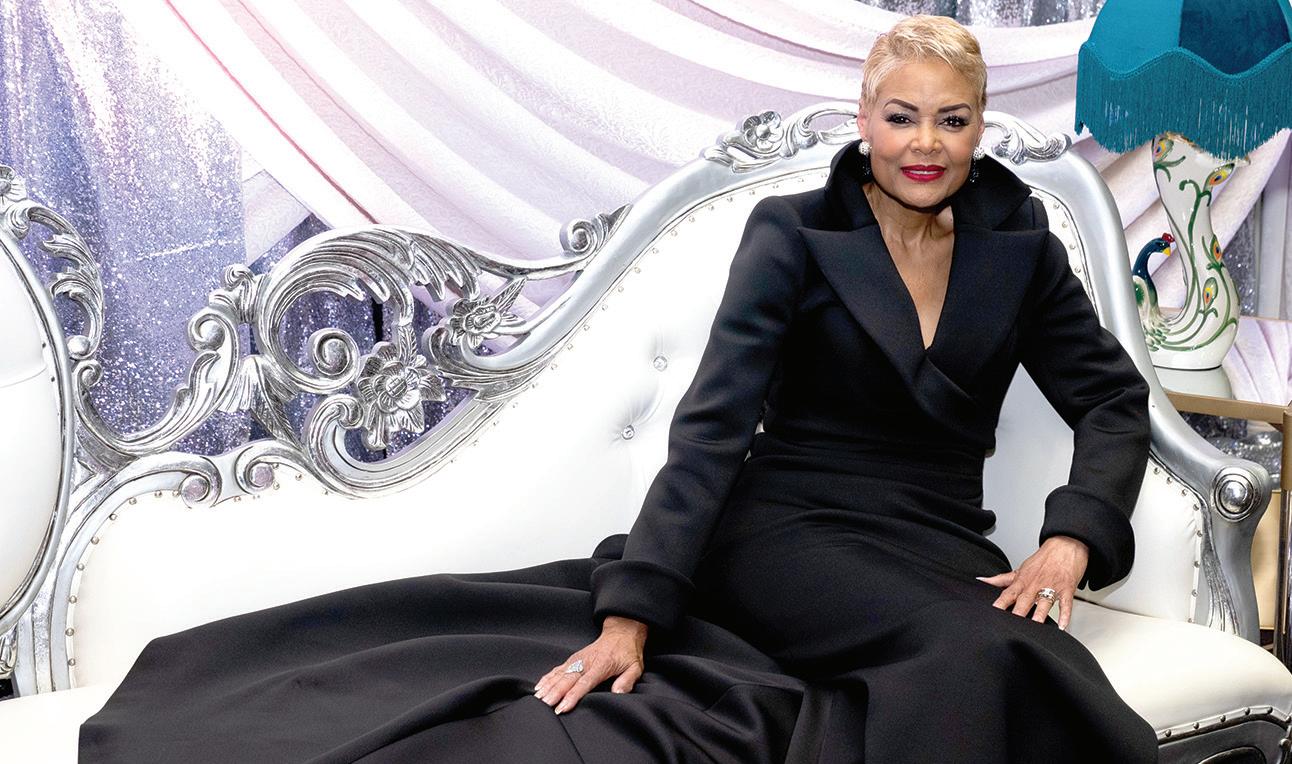
style
A lesson in Education Salute honorees and guests served high
fashion
at 38th Annual Gala
SLIFF Beyond Borders

By Zaria Mac and Kenya Vaughn St. Louis American
Along with the honorees, the scholars and the overall ambience that is an ode to Black excellence, fashion is part of the tradition of The St. Louis American Foundation’s Salute to Excellence In Education Scholarship and Awards Gala.
And for year 38, everyone in attendance once again understood the assignment Saturday evening at America’s Center. The icing on the cake for 2025 was seeing honorees worthy of fashion awards along with their educator accolades.
Very few would argue with Stellar Performer Mary Elizabeth Grimes being crowned best dressed. Her black gown with the blazer-cut bodice was a fashion master class in how the perfect structure can elevate a look. Paired with the drama of the flared hem, she stopped guests in their tracks the entire night. Ms. Grimes also knew to go demure with the accessories as to not overshadow the statement made by the dress.
But she wasn’t the only honoree serving style inspiration. Dr. Michael Peoples, principal of University City High School and Director of Secondary Education for the University City School District, left an impression. Making a regal entrance, he wore a royal purple velvet suit with a satin collar—perfectly complementing the night’s theme. Tamara Pendleton, Founding Principal of Believe Academy in St. Louis and a fellow honoree, turned heads in a floor-length, off-the-shoulder black gown. It was adorned with silver vine details that shimmered under the lights.

Normandy Schools Collaborative Superintendent Dr. Michael Triplett demonstrated the versatility in men’s formalwear with his textured winter white tuxedo jacket. So did Gary Boyd, aka “Mr. Them Yo People.” He brought his signature flair to the event in a black Armani suit with gold floral detailing and a jeweled collar. His trademark black and jeweled emperor crown added a royal twist that drew smiles and camera flashes alike. St. Louis radio veteran and iHeart Media personality BJ the DJ represented for “the classic man” in an all-black suit with a matching vest and pocket square. His brim from Yuppie Club perfectly blended classic style with urban cool. Urban League of Metropolitan St. Louis President Michael P. McMillan’s “power suit” tuxedo also deserves a mention. Presenters, family and supporters also matched the top-tier style tone set by the fashionable honorees. June Fowler wife of 2025 Lifetime Achievement Award recipient Dr. Flint Fowler, stunned in her elegant floor-length jacket with gold embellishments. And Toni Bailey, mother of 2025 Education Salute dinner co-chair Errin Braddock, demonstrated contemporary elegance. Her sleeveless white blouse – with an oversized bow in front – and silver sequin pants
See STYLE, B3
Honoree Dr. Michael Peoples and his lovely wife Channon perfectly coordinated their formal wear at The St. Louis American Foundation’s 38th Annual Salute to Excellence in Education Scholarship and Awards Gala.
A generational jam
Past meets present in high-energy Salute after party
By Zaria Mac St. Louis American
After an inspiring evening honoring educators, advocates and scholars, the celebration didn’t stop — it shifted into high gear. As soon as guests exited the ceremony at the St. Louis American Foundation’s 38th Annual Salute to Excellence in Education Scholarship and Awards Gala, they stepped into the after party. It was the perfect wind-down — or rather, turn-up — where folks could let loose, connect and groove with like-minded professionals.
The theme, Old School vs. New School, set the tone for the night. Two powerhouse DJs commanded the turntables: DJ Kut repped the old school, while DJ Homicide brought the new school flavor. The crowd — a lively mix of generations — came ready to dance, laugh, and relive the soundtrack of their lives. The party was presented by Morgan Casey’s Date Ideas and Things To Do. DJ Kut wasted no time setting the
stage, dropping classics like LL Cool J’s “I’m Bad.” The floor quickly filled with partygoers throwing their hands up, nodding to the beat and singing every word. The air buzzed with nostalgia as he kept the vibe alive with more ’90s heavy hitters. Then the mood shifted. DJ Homicide took over, and the bass hit hard as Webbie’s “Wipe Me Down” blasted through the speakers. The club banger sent the younger crowd rushing to the floor. His smooth transitions carried everyone through the early 2000s with “Teach Me How to Dougie,” and straight into the present day with Kendrick Lamar’s “Black Grand National.” It was a seamless mix of eras — a musical time machine powered by rhythm and joy. Not to be outdone, DJ Kut came back strong, spinning “Da’ Butt” by Experience Unlimited (EU), followed by Dr. Dre’s “Nuthin’ but a ‘G’ Thang” and Tupac’s “I Get Around.” Every beat pulled the crowd closer together, celebrating the roots of Black culture and its ever-evolving sound.
34th Annual Film Festival highlights global experience, magnifies Black voices
By Kenya Vaughn St. Louis American
The 34th Annual Whitaker St. Louis International Film Festival (SLIFF) returns November 6–16 with screenings across the region and an extremely relevant theme: “Film Without Borders.”
“At a time when division often dominates the global conversation, this year’s theme reminds us that storytelling is a universal language,” said Bree Maniscalco, executive director of Cinema St. Louis. “Film festivals like SLIFF create a space where differences are not barriers but bridges, connecting communities through shared humanity.”
That spirit of connection is especially present in SLIFF’s Race in America: The Black Experience sidebar, now in its 11th year. Originally launched to honor the life and legacy of Michael
See SLIFF, B3
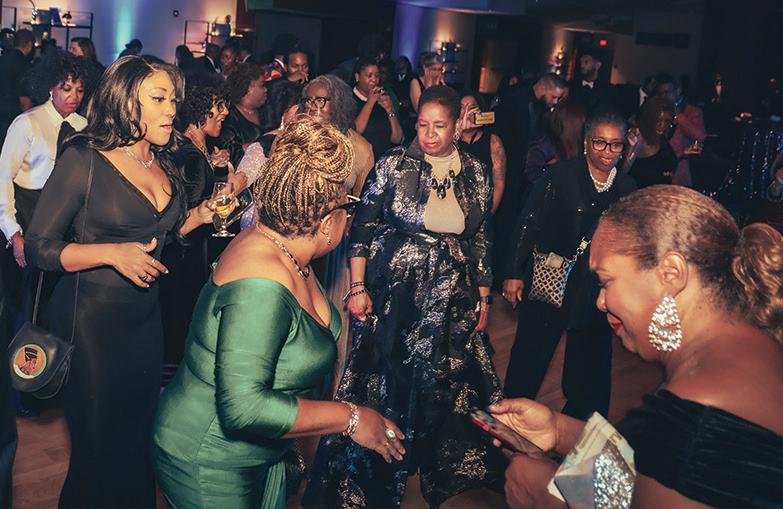
ly following
and Awards Gala last Saturday. The party was produced by Morgan Casey’s Date Ideas and Things To Do platform.
Former mayor Tishaura Jones owned the dance floor all night. She floated across the room like Naomi Campbell in a white chiffon blouse and red flowing skirt — part elegance, part diva. She wasn’t alone. Guests who cut a rug ranged from Lifetime Achievement Award recipient Dr. Flint Fowler — who couldn’t resist dancing to “Boots on the Ground” — to the newest cohort of Suggs Scholars. Creative touches added flair throughout the venue. Black-and-white caricature fans by The Art of Jas offered fun keepsakes that captured each guest’s personal-
Photo by Taylor Marrie/St. Louis American
Guests cut a proverbial rug at the Old School vs. New School after party immediate-
the St. Louis American Foundation’s 38th Annual Salute to Excellence in Education Scholarship
Photo courtesy of Cinema St. Louis
‘Enongo,’ an animation-documentary that tells the story of rapper, producer, and Ph.D. candidate Enongo LumumbaKasongo, will screen as part of the 34th Annual Whitaker St. Louis International Film Festival— which takes place November 6-16.
Photo by Lawrence Bryant/St. Louis
Photo courtesy of Alex Don
2025 Stellar Performer Mary Elizabeth Grimes, President of Marian Middle School, stunned in her beautiful black gown at The St.
Louis American Foundation’s 38th Annual Salute to Excellence in Education Scholarship and Awards Gala Saturday evening at America’s Center.
CONCERTS
Fri., Nov. 7 – Nov. 9, The St. Louis Symphony Orchestra presents Britten’s War Requiem, Powell Symphony Hall. For more information, visit www.slso.org.
Thurs., Nov. 13, 6 p.m. & 9:30
p.m. Keke Wyatt, City Winery St. Louis, 3730 Foundry Way, St. Louis, MO 63110. For more information, visit https://citywinery.com.
Sat., Nov. 15 – Nov. 16, The St. Louis Symphony Orchestra presents The Lion King in Concert, Powell Symphony Hall. For more information, visit www.slso.org.
Sun., Nov. 16, 7 p.m. The Boy Is Mine Tour with Brandy and Monica with special guest Kelly Rowland and Muni Long, Enterprise Center, 1401 Clark Ave, St. Louis, MO 63103. For more information, visit www.enterprisecenter.com.
Mon., Nov 17, 6:30 p.m. doors, John Legend Get Lifted - 20th Anniversary, The Factory, 17105 N Outer 40 Road, Chesterfield, MO 63005. For more information visit, www.thefactorystl.com.
Wed., Nov. 19, doors 7 p.m.
Tye Tribbett with Mike Todd and Melvin Crispell, The Pageant, 6161 Delmar Blvd, St. Louis, MO 63112. For more information, visit www.thepageant.com.
Fri., Nov. 21, doors 7 p.m. Playadoors with Kudda & Friends, Delmar Hall, 6133 Delmar Blvd, St. Louis, MO 63112. For more information, visit www.thepageant.com.
STL Sites & Sounds
Sat., Nov. 22, 8 p.m. Sexyy Red & Friends Glorilla, G Herbo and more, Enterprise Center, 1401 Clark Ave, St. Louis, MO 63103. For more information, visit www.enterprisecenter.com.
SPECIAL EVENTS
Fri., Nov. 7, 5:30 p.m.
PLANETARIUM: Monthly Star Party, St. Louis Science Center, 5050 Oakland Ave, St. Louis, MO 63110. For more information, visit www.slsc.org.
Fri., Nov. 7, 7 p.m. New Works
Festival choreographic lab, Staenberg Performance Lab at COCA, 6880 Washington Ave, St. Louis, MO 63130. For more information, visit www.cocastl.org.
Sat., Nov. 8, 10 a.m. The 13th Annual Cherokee Street Jazz Crawl, Shops on Cherokee St. For more information, visit https://cherokeestreet.com.
Sun., Nov. 30, 7 p.m. R&B Bowling After Dark, Tropicana Lanes, 7960 Clayton Rd, Richmond Heights, MO 63117. Purchase tickets here, www. eventbrite.com.
COMEDY
Sun., Nov. 9, 7 p.m. Special Event: Darren Brand, Helium Comedy Club, 11151 St. Louis Galleria Street, St. Louis, MO 63117. For more information, visit https://st-louis.heliumcomedy.com.
Fri., Nov. 14, 5 p.m. Gallery Laughs with Kym Whitley, St. Louis Art Museum, 1 Fine Arts Drive, Forest Park, St. Louis, MO. For more information, www.slam.org.

Fri., Nov. 14 - 16, Special Event: Bill Bellamy, Helium Comedy Club, 11151 St. Louis Galleria Street, St. Louis, MO 63117. For more information, visit https://st-louis.heliumcomedy.com.
Fri., Nov. 28 – Sun., Nov. 30, St. Louis’ own Lavell Crawford, Helium Comedy Club, 11151 St. Louis Galleria Street, St. Louis, MO 63117. For more information, visit https:// st-louis.heliumcomedy.com.
ST. LOUIS MUSIC SPOTLIGHT
Fri., Nov. 21, 8 p.m. (7 p.m. doors) Through The Fire: A Chaka Khan Tribute featuring Cherise Louis Mason and Tish Period, Live By Loews, 799
Clark Avenue.
Through Dec. 31, 11 a.m. Jazz Sunday, Beatnik Bob’s in City Museum, 750 N. 16 St. St. Louis, MO 63103. For more information, visit https://citymuseum.org.
THEATRE
Fri., Nov. 14, 8 p.m. First Run Theatre Presents: Deposition, Kranzberg Black Box Theatre, 501 N Grand Blvd, St. Louis, MO 63103. For more information, visit https://kranzbergartsfoundation.org.
Nov. 15- Nov. 16, Robert Townsend: Living The Shuffle, Kirkwood Performing Arts Center, 210 E. Monroe Avenue, 63122. For more information, visit www.metrotix.com or call
314.534.1111.
Through November 16, The Repertory Theatre of St. Louis presents The Brothers Size, Emerson Studio Theatre, 130 Edgar Rd. Webster Groves, MO 63119. Matinee showtimes available. For more information, visit www.repstl.org.
Through Nov. 16, 7:30 p.m. The Notebook: The Musical, Fabulous Fox, 527 N Grand Blvd, St. Louis, MO 63103. Purchase tickets here, www. metrotix.com.
Nov. 25- Dec. 7, The Fabulous Fox presents The Wiz. The Fabulous Fox. For more information, visit https://www.fabulousfox.com/ ART
Through February 1, 2026, Jennie C. Jones: A Line When Broken Begins Again, Pulitzer Arts Foundation and Museum, 3716 Washington Blvd, St. Louis, MO 63108. For more information, visit https://pulitzerarts.org.
Through February 8, 2026, Teresa Baker: Somewhere Between Earth and Sky, Contemporary Art Museum, 3750 Washington Blvd, St. Louis, MO 63108. For more information visit, https://camstl. org.
Through June 2026, The Future Is Female, 21c Hotel and Museum Hotel St. Louis, 1528 Locust St, St. Louis, MO 63103. For more information, visit https://21cmuseumhotels.com.




Continued from B1
Brown, the program continues to spotlight AfricanAmerican stories and storytellers—this year with expanded reach and deeper resonance.
SLIFF presenter Cinema St. Louis has partnered with the International Institute to present the “St. Louis Immigration Project,” a new film debuting Sunday, November 16. The project pairs local filmmakers with immigrant and refugee storytellers to share narratives of resilience, culture, and family.
“’The Immigration Project’ is vital because film can give voice to stories that are too often overlooked in our community,” said Emmett Williams, Director of Festival Curation & Education.
“By partnering local filmmakers with immigrant and refugee storytellers, we’re not only preserving these experiences but also inviting audiences to see St. Louis through a broader, more human lens.”
Among the twenty films and shorts featured in the Black Experience sidebar, three standouts offer powerful meditations on survival, artistry, and legacy.
The intimate reckoning of ‘Night Fight’
Award-winning filmmaker Khary Saeed Jones returns to SLIFF with “Night Fight,” a deeply personal documentary that explores fear, memory, and Black survival.
Fresh off its world premiere at SXSW 2025, “Night Fight” has earned Best Feature at the Newburyport Documentary Film Festival and the Karen Schmeer Excellence in Documentary Editing Award.
“I started making these video self-portraits, documenting my feelings and the versions of myself that were born on that day,” Jones said. “I made the film to give audiences time
to feel, to remember, and to talk.”
Rather than follow a traditional narrative arc, “Night Fight” unfolds as a layered reckoning. Jones returns to the site of a past encounter, asking not just what happened, but what it fractured within him. On screen, he inhabits four figures shaped by trauma and vigilance: one runs and becomes lost, one fixates on pursuit, one never makes it home, and one burns with anger so intense it threatens to consume him.
“There are a lot of people getting up every day trying to do other people harm,” Jones said. “They are drowning in hate and anger. We have a huge problem on our hands. The film is built for a room and a conversation, not just a feed.”
Jones served on the editorial team of “Where the Pavement Ends,” the Ferguson–Kinloch documentary that aired nationally on PBS’s America ReFramed and earned a Gold Telly Award in Television — History. With “Night Fight,” he deepens that inquiry into policing, memory, and the psychic toll of survival.
The film screens Saturday, November 8 at Greenfinch (3:00 p.m. with a Q&A) and Saturday, November 15 at Arkadin (1:00 p.m.).
‘Enongo’ makes Black History through animation
SLIFF 2025 also features “Enongo,” a groundbreaking animation-documentary hybrid that tells the story of rapper, producer, and Ph.D. candidate Enongo LumumbaKasongo—known to fans as Sammus. Through autobiographical and Afrofuturisminspired music, “Enongo” explores mental health, growing up, relationships, and the complexities of identity. The film blends actuality and animation to deliver a universally relevant, intimate, and empowering narrative.
“Enongo” is the first feature-length film of any genre in history to be animated entirely by an all-Black women team. The relationship between sound and image illustrates her artistry – and the pressures of balancing multiple roles as a woman in academia, the daughter of West African immigrants, and an artist navigating 21st-century America.
“I wanna see this thing go places,” said director Kevin Schreck. “I think this story is relevant and, dare I say, needed for a lot of people. It’s timely—and timeless.”
“Enongo” screens Saturday, November 15 at 11 a.m. in Brown Hall Auditorium on the campus of Washington University. A post-show discussion will follow.
A restoration of dignity with ‘Greenwood’
Directed by Jim Karpowicz, “Greenwood” is a compelling documentary that explores the powerful and often overlooked Black history of a historic St. Louis burial ground— and the ongoing efforts to restore and preserve it. It screens as part of the sold-out presentation of Tony West’s “A Black History Tour of St. Louis” on November 8, and again during the “Documentary Shorts 6—Little Wonders” program at 5 p.m. on Friday, November 14 at The Chase Park Plaza.
Whether through the lens of personal reckoning, animated resistance, or historical restoration, SLIFF 2025 invites audiences to reflect, connect, and celebrate the power of film to spark dialogue.
The 34th Annual Whitaker St. Louis International Film Festival runs November 6–16 at venues across the region. For a full list of films, locations, and programming, visit www.cinemastlouis.org.


STYLE
Continued from B1
reinforced the unrestricted style norms of 21st century black-tie attire. Dr. LaTonia Collins Smith president of Harris-Stowe State University, also
AFTER PARTY
Continued from B1
ity. Photo ops included a grand white leather couch set against blue and purple
demonstrated the payoff of bold formal attire. Her yellow sequined gown with silver and gold and blue designs that instantly drew eyes to the dress.
The names mentioned are just a few of the hundreds who took formal style to the max at the St. Louis American Foundation’s 38th Annual Salute to Excellence in Education Scholarship and Awards Gala last Saturday.
To see for yourself, visit stlamerican.com for additional photos and related content.
décor, and a powerful display wall of The St. Louis American newspapers.
As the final song, Muni Long’s “Made for Me,” played, guests exited with smiles. Webster University Suggs Scholar Elias
Tannous, a mainstay on the dance floor, was still swaying to the beat. The after party was a vibrant celebration of culture, connection, and community — a quick blast to the past that no one wanted to end.

Photo courtesy of SLIFF
Directed by Jim Karpowicz, “Greenwood” is a compelling documentary that explores the powerful and often overlooked Black history of a historic St. Louis burial ground—and the ongoing efforts to restore and preserve it.
June Fowler with her husband Dr. Flint Fowler, 2025 Lifetime Achievement Award recipient, at The St. Louis American Foundation’s 38th Annual Salute to Excellence in Education Saturday at America’s Center.
Photo by Taylor Marrie/ St. Louis American
Photo by Taylor Marrie/St. Louis American
Excellence in Education honorees Dr. Michael Triplett, Dr. Michael Peoples and Tambra Pendleton receiving their awards at The St Louis American Foundation’s 38th Annual Salute to Excellence in Education Scholarship and Awards Gala Saturday at America’s Center.

We came. We saw. We Saluted! The only thing I love more than being right is being able to be right AND say I told you so. And that’s exactly what I get to do as I give my Salute rundown! Aside from me having to drive all the way to my Aunt Louise’s house and wake her up so she could help me out of my dress, I have not a single complaint about the St. Louis American Foundation’s 38th Annual Salute to Excellence in Education Scholarship and Awards Gala. The gala was glamorous, elegant and distinguished. And the after party was even more lit than I guaranteed it would be! Napoleon Dynamite wishes he could work it like Webster University Suggs Scholar Elias Tanuess! He turned America’s Center out! When I tell you he was on the dance floor from the first song until the very last one, understand that it is not an exaggeration. Lord, I miss the days when my bladder would allow me to do anything all the way through without a bathroom break involved. But anyway, he needs a dance scholarship along with that Suggs scholarship after how he put it down Saturday night. My, my new unofficial get down godson Elias wasn’t the only dancing machine at Salute this year. Former Mayor Tishaura O. Jones was giving life as she was getting it in. The turn up was real! She debuted her sister locs at Salute – and let that hair down, both proverbially and actually. But honestly, how could anyone resist? DJ Kut, DJ Homicide and DreCo were a dream team when it came to keeping the party cracking! One of my favorite moments was
watching the baby stampede that took place as folks did a mad dash to the dance floor for “Boots on the Ground,” had me hollering on the inside. You would have to if you almost got knocked over by a woman of a certain age in an evening gown and kitten heels trying to run to the dance floor while flicking her hand to the beat as soon as she heard, “Where them fans at?”

Salute to excellence in fashion I know I tortured y’all with that first item, because the reason you came here is to see who wore what. Nearly everyone in the building was “so fresh and so clean” so I know I’m going to accidentally leave some people off. Charge it to my head and not my heart. Let’s start with the undisputed champion of fashion for the Salute 38. Three words. Mary Elizabeth Grimes! Stellar Performer in Education and Fashion is how she will be entered into the Salute history books. Carol Daniel said she is going to get her body snatched so she can steal that glorious black gown. And if I could consistently stay on somebody’s Peloton, Carol would have to fight me for it! Even though she probably wears Oscar de la Renta to the grocery store, I still wasn’t expecting to be gagged like that! Alright, let’s get into the rest of the stunners! I’ve decided to break them down by category, so I won’t get so deep into my descriptions that I won’t have room to name all the people I have in mind.
Shimmering sistas. Le’Erin Wagner, Dr. Kaci Shahid and Dr. LaTonia Collins Smith

of Dr. Peoples’ family)
Red.Hot.Fire. Tishaura Jones, Nicole McConnell and Josephine Drake
Distinguished gentlemen. Brandon Williams, Ono Ikanone, Melvin Moore, Michael McMillan, Dr. Michael Triplett, Shannon Rochon, Carlos D Shae and Travis Rainey – Sir, that African print tux jacket and bowtie were absolutely everything!
Green Goddesses. Kira Cobb, Brittanie Skye, Erika Wilson, Dr. Cierra Wourman and Gabrielle Young. Was it me, or did it feel like there were enough shades of emerald at Salute this year to reenact that one scene from “The Wiz?”
Black like the omen.
Jasmine Furr, Nicole Shurn, Charmaine Aaron, Jeanetta Hawkins, Janet Williams, Monique Abby and Raphaella Prange (she had a pop of gold, but still…).
The youngsters E’Sabel Merriweather, Dadra Smith

and Reyla Green (her personality won me over).
Couples of cuteness. Dr. Flint and June Fowler, Wayne Haley and Camille, Cornell Thirdkill and Taydrea Moore, Leah and Jason Spiros and Dr. Michael and Channon Peoples Channon, those purple gloves to match your husband’s velvet tux destroyed me in the best way possible!
A family affair. Danielle Smith, Path Smith Thurman and Solomon Thurman, Toni Bailey and Errin Braddock and The Peoples (as in the rest
Farewell Prime 55. I spent the last two weeks a nervous wreck about the possibility of losing The Ambassador, it never crossed my mind that another staple establishment would go to glory on me! When I found out on Facebook that one of my favorite Black-owned eateries would be bowing out of the restaurant scene, I was utterly shook to capacity. Was I the only one grieving the late, great Orlando Watson all over again? I was in my feelings like Drake. Well, not exactly like Drake, but you get my drift. Him and Tony “T-Luv” Davis did a beautiful thing when they introduced the St. Louis region to their unique take on the Black upscale dining experience. And I honestly thought that once they passed the five-year mark that they would be around forever. Well, not forever, but you know what I mean. If somebody had given me the slightest clue that they were closing down, my deep freezer would be full to the brim with their crab cakes and shrimp and grits! Everything must change, and nothing lasts forever. We had some good times – particularly the times when St. Louis stars Cedric The Entertainer and Nelly came through and turned the spot out with events, and when the legendary entertainment reporter Kevin C. Johnson was surprised with a party and a proclamation. Because I know T-Luv, I know that this was the best business decision. I want to shout out the whole Prime 55 team, and the patrons, who kept it around for six years – which we all know is a major win in the “here for lunch, gone by dinner” restaurant industry.
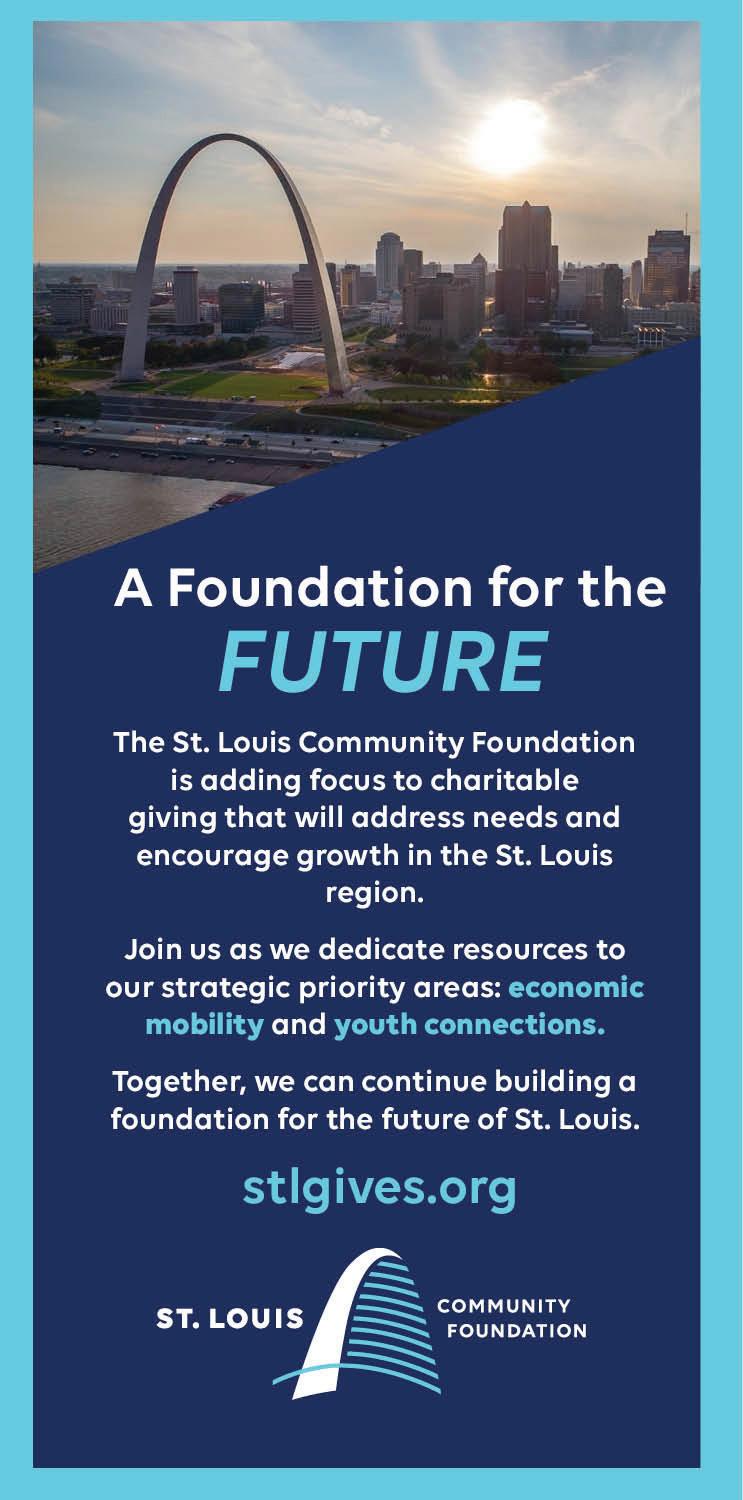
1. Attorneys Monique Abby and Danielle Smith were visions in black at
The St. Louis American Foundation’s 38th Annual Salute to Excellence in Education Scholarship and Awards Gala Saturday at America’s Center
2. Travis Rainey, Quanisha Major and Marlice House at the 38th Annual Salute to Excellence in Education Scholarship and Awards Gala at America’s Center Saturday night
Photos by Taylor Marrie/St. Louis American
“Until the day I’m dunked on more than I’m blocking shots, I’m going to keep going. But none of us will live to that day.”
— San Antonio Spurs star Victor Wembanyama

PreP Football Notebook
With Earl Austin Jr.
High-flying ESL have sights set on another state title
The East St. Louis Flyers have their sights on defending their Illinois Class 6A state championship.
The Flyers took their first step last Friday night with an impressive 63-7 victory over visiting Plainfield East in a firstround playoff game at Clyde C. Jordan Stadium.
On a team full of big-play athletes, it was junior Ronnie McMiller’s turn to shine on this night. The speedy wide receiver was a star on special teams as he returned three punts for touchdowns, which yielded a state record. McMiller scored on punt returns of 88, 80 and 41 yards. His 88-yard return opened the scoring and got the Flyers off and running.
while their defense has given up a total of only 26 points. The seventh victory came on a forfeit against Gadsden County from Florida.
Missouri District Semifinals on Top

On the Missouri side, district semifinal games will be held this weekend around the state. Here are a few of the top matchups this weekend. To see all of the matchups and brackets, visit the website www.mshsaa.org
Junior quarterback Reese Shanklin engineered the offensive attack by throwing three touchdown passes. He threw scoring passes to senior Indiana recruit Kortez Rupert, Amir Tillman and Jamarion Flowers.
East St. Louis (7-3) will go on the road for its second round game, where they will face undefeated Chatham-Glenwood.
The Flyers’ three losses have come on the road against nationally-ranked teams IMG Academy in Florida, Bishop Gorman in Las Vegas and Bergen Catholic in New Jersey. In their six victories on the field, the Flyers are averaging 57 points a game
SLUH at Lafayette, Friday, 7 p.m. - Class 6, District 2 Summit at Eureka, Friday, 7 p.m. - Class 5, District 2 Lutheran North at Gateway STEM, Friday, 7 p.m. - Class 4, District 3 University City at Orchard Farm, Friday, 7 p.m. - Class 4, District 4 Ladue at Hazelwood East, Friday, 7 p.m.Class 5, District 3 First Round Playoff Standouts
Junior running back Machai Henderson of Cahokia rushed for 139 yards on 24 carries and three touchdowns in the Comanches 44-24 victory over Centralia.
Junior quarterback Tra’Vren Williams of North Point completed 24 of 34 passes for 348 yards

Senior quarterback Gabe Rodriguez of DeSmet completed 21 of 26 passes for 280 yards and two touchdowns in the Spartans’ 63-17 victory over Marquette.
Sophomore quarterback Marquavion Jackson of Hazelwood West rushed for 63 yards and a touchdown and passed for 128 yards and a touchdown in the Wildcats’ 28-7 victory over Francis Howell North.
Senior running back Elijah Fox of St. Charles West rushed for 218 yards on 18 carries and three touchdowns in the Warriors’ 43-8 victory over Winfield.
Senior wide receiver Jalen Cotton of University City had four receptions for 119 yards and a touchdown in the Lions’ 46-0 victory over Lutheran-St. Charles.
Senior running back Aaron Peyton of Francis Howell Central rushed for 132 yards on 32 carries and a touchdown in the Spartans’ 14-0 victory over Fort Zumwalt West.
Senior quarterback Brett Ottensmeyer of Parkway West completed 20 of 24 passes for 271 yards and four touchdowns in the Longhorns’ 49-13 victory over Parkway Central.
SPortS eye
With Alvin A. Reid
Winn reaches defensive gold standard
Masyn Winn’s second season with the St. Louis Cardinals ended prematurely because of a nagging knee injury but the talented shortstop still struck gold.
Winn is recipient of the National League Rawlings Gold Glove for his defensive excellence.
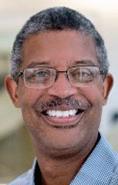
At 23, he becomes the youngest Cardinal to receive the award and is the 100th honoree in the team’s history.
While the number of games played (129) stands out, Winn made just three errors in 501 total chances. He is indeed deserving of the award.
While Winn led the league at shortstop in the category of defensive runs saved in 2024, he made 18 errors. Gold Glove recognition would only come if he dramatically reduced his defensive missteps, many of which came on throws to first base.
He met the challenge and has joined elite company. The Cardinals shortstops to win a Gold Glove
are Édgar Rentería (200203), Hall of Famer Ozzie Smith (1982-92) and Dal Maxvill (1968).
His three errors matched the Gold Glove low at shortstop, and he joins Baltimore Orioles Hall of Famer Cal Ripken Jr., and former Cleveland star Omar Vizquel in the rare air of that low a total.
“I’m assuming those guys played a couple more games than I did, but to be able to go out there and be consistent, that’s all I’ve been asking for of myself,” Winn shared with John Denton of mlb.com.
“I wanted to show these guys what I could do in terms of being consistent. This season was huge for me by taking a step. It was a big step for me to drop my errors, which I expected of myself.”
Winn could have been alone in the Gold Glove record book with just two errors, but MLB overruled an official scorer in Miami on August 19, 2025. A recorded hit was later changed to an error on Winn.
With the Cardinals entering a re-tooling and/ or rebuilding phase under Chaim Bloom, president of baseball operations, Winn

should be an anchor for the team in the future.
But at what cost contractually.
According to Spotrac, which publishes player compensation, Winn received a $1.2 million signing bonus after being drafted in 2020.
He was paid $770,850 last season and will make $820,000 in 2026. Winn remains a bargain, but the Cardinals are hopefully preparing to make him one of MLB’s highest-paid shortstops.
Here are the Top Six in annual compensation: Francisco Lindor, New
Witt, 25, is the 2025 American League Gold Glove winner at shortstop. Following the 2023 season, when Witt was 23, the Royals signed him to an 11-year, $288,777,777 contract, which included a $7.8 million signing bonus.
His average salary
St. Louis Cardinals shortstop Masyn Winn has become the youngest player in St. Louis Cardinals franchise history to win a Gold Glove.
during the length of the contract is about $26 million and he holds a player option from 2031 to 2034. The Royals hold a team option for the following four years, and Witt is not eligible for unrestricted free agency until 2038. While Witt has been a superior offensive player, the Cardinals must consider paying Winn something in Witt’s neighborhood before he reaches free agency in 2029.
The Reid Roundup
St. Louis Cardinals centerfielder Victor Scott
II was edged out by Chicago Cubs centerfielder Pete Crow-Armstrong for the NL Gold Glove at that position…Former CBC High School star Jeremiyah Love rushed for 136 yards, including a 94-yard touchdown run, and another TD in Notre Dame’s 25-10 win over Boston College. He added four receptions for 30 yards, and his NFL Draft stock has skyrocketed… Colorado coach Deion Sanders restricted players from the media following an embarrassing 52-17 loss to Arizona. He claims he was protecting his team because all fault lies with him…In a battle of bigname HBCU rookie head coaches, DeSean Jackson led Delaware State to a 27-20 win over Michael Vick’s Norfolk State squad last Thursday night in Philadelphia. DSU is favored to beat Morgan State and Howard before a Nov. 22 showdown with South Carolina State with a possible Celebration Bowl appearance on the line…James Franklin fired by Penn State in October, is reportedly in “advanced talks” to take the open Virginia Tech job.
Earl Austin Jr.
over Fort Zumwalt South. Junior running back Donald Collier Jr. of
Cahokia rushed for 124 yards on 20 carries and three touchdowns in the Comanches’ 44-24 victory
over Centralia.
University City Indians wide receiver Jamal Dixon (4) has been instrumental in the success of the team this year at 9-1 with one game left in the regular season.
Photo by Wiley Price / St. Louis American
Alvin A. Reid
York Mets ($34.1 million); Carlos Correa, Minnesota Twins (33.3M); Corey Seager, Texas Rangers ($32.5M); Mookie Betts, L.A. Dodgers ($30.4M); Trea Turner, Philadelphia Phillies ($27.3M); Bobby Witt, Kansas City Royals ($26.3M).
Photo by Tim Vizer / Imagn Images / Courtesy msn.com


ADVERTISEMENT FOR BIDS
SEALED BIDS
Zurich Services Corp. (St. Louis, MO) seeks Head of Managed Security to lead portfolio of managed cybersecurity services. Req. certs: CompTIA Security+/ Network+ & CySA. Req. travel 20% w/in U.S. & occ. intl. travel. Remote option from U.S. w/req. travel to St. Louis office on qtly basis. Salary: $181,480/yr. Apply at Zurichna.com/en/careers, Job ID: 127900
Sealed proposals for Food Service Management will be received at Epworth Children & Family Services, Inc., 110 N. Elm Ave. St. Louis, Mo. 63119 until 9:00 am on Saturday, January 31st, 2026 and then publicly opened. To receive copies of November 1st, 2025, RFP or for more information contact Kimberly Mims at (314) 918-3400.
Client Bathrooms, Ragland Education Building, Project No. M2406-01 will be received by FMDC, State of MO, UNTIL 1:30 PM, December 9, 2025. Project information available at: http://oa.mo. gov/facilities HEAD OF MANAGED SECURITY
Bids for Backup Power Equipment Replacement at Fulton Reception and Diagnostic Center, Project No. C241501, will be received by FMDC, State of MO, UNTIL 1:30 PM, December 2, 2025. Project information available at: http://oa.mo. gov/facilities

SEALED BIDS

UPGRADES FOR THE SUBCONTRACTING OPPORTUNITIES IN THE FOLLOWING AREAS: SELECTIVE DEMOLITION, CONCRETE, MASONRY, THERMAL AND MOISTURE PROTECTION, OPENINGS, FINISHES, SPECIALTIES, FURNISHINGS,
SEALED BIDS
Bids for Constructions Services –East Region, Project No. IDIQMCA6004, will be received by FMDC, State of MO, UNTIL 1:30 PM, November 20, 2025. Project information available at: http://oa.mo. gov/facilities
PUBLIC NOTICE
Notice is hereby given that the Metropolitan St. Louis Sewer District Requests for Quotes, Bids and Proposals are posted online for public download. Please navigate to www.msdprojectclear.org > Doing Business With Us > View Bid Opportunities Metropolitan St. Louis Sewer District is an Equal Opportunity Employer.
NEIGHBORHOOD AFFORDABLE HOUSING PLAN
Seeking experienced urban planning firm to develop an affordable housing plan for the West End / Visitation Park Neighborhood
Please send statement of qualification and list experience to WeCollab c/o Cornerstone 6026 Etzel St. Louis, MO 63112

SOLICITING BID
Reinhardt Construction LLC is Soliciting Bids from MBE/WBE/DBE/Veteran/ SDVE for the following: CP241935 Memorial Stadium Facilities –Concourse Restroom & Concession Stand Upgrades Contact: Scott Schieber, 573-999-6865, scotts@ reinhardtconstructionllc.com Phone: 573-682-5505
Sealed Bids Needed for Bid Opening @ Pine Lawn City Hall (6250 Steve Marre Ave.) 5:30pmThursday -November 20, 2025 for:
God is still faithful — even now
His love continues to anchor and restore
By Rev. Dr. Anthony L. Riley
Guest Columnist
We’ve seen enough in St. Louis to forget how to breathe — protests and politics, grocery bills and gunfire, ICE raids and school closures. But if you can still catch your breath, you’ve got a reason to praise. “Let everything that has breath,” the Psalmist said. That means you. That means us. Because God is faithful.
Psalm 89 says, “I will sing of the Lord’s great love forever.” That’s not just a lyric. It’s a lifestyle. When the city feels divided and our systems fail,
faithfulness reminds us that God never has. We don’t shout today because life is easy — we shout because we’ve survived what should’ve destroyed us.
But there’s a warning in the Word. God’s promise to David wasn’t just for him — it was for his descendants. His children’s children. That means legacy matters.
And right now, in St. Louis, we’re in danger of cutting off our own bloodline. We’ve become gatekeepers instead of door-openers. We’ve traded mentorship for memory, heritage for hierarchy. We celebrate what was and forget to invest in
Religion

what’s coming next.
The promise is generational — but if we keep stifling our youth, defaulting to elder worship, and clinging to tradition over transformation, we’ll miss what God wants to do through them. Some doors in this city are blocked. And when young people take the roof off — when they stream church, question the system, and find God in the digital wilderness — maybe they’re not rebelling. Maybe they’re just reaching.
Faithfulness doesn’t fear change. Faithfulness builds bridges. Faithfulness says: “I see you in the future, and you look
“When
better than you look right now.”
Still, the numbers don’t lie. Churches are closing. Pew Research says nearly 30% of Americans now claim no religious affiliation. Attendance is dropping. Aging buildings, aging leadership, and aging visions are collapsing under their own weight. But the Gospel never depended on a building. “Upon this rock,” Jesus said, “I will build my church — and the gates of hell shall not prevail against it.”
God’s faithfulness doesn’t compare. It doesn’t depend on our circumstances or our connections. It’s not canceled by
corruption, inflation, or war. Babylon may take the city, but it cannot take the covenant.
St. Louis knows this story. We’ve been through Ferguson. Through pandemics. Through disinvestment and displacement. Through tornados. Through grief that words can’t hold. Yet, through every valley, God has remained faithful.
So, take your eyes off the chaos for a moment. Lift them higher. Our help doesn’t come from Washington or Jefferson City or City Hall. It comes from the Lord — the same God who turns test into testimony, chaos into creation, sorrow into strength.
The Psalmist ends with a declaration, not a doubt: “Blessed be the Lord forever.” So even here, even now — in this city, in this season — we can still say: God is faithful.
The Reverend Dr. Anthony L. Riley serves as the
of the historic Central Baptist Church of St. Louis—the second oldest Black church in St. Louis and the third oldest west of the Mississippi River.
By Rev. Dr. Heber Brown
Immediately after the killing of Charlie Kirk, many African American Christians expressed their dismay, their indifference or their support for what happened to the controversial figure.
Many Christians were surprised to read comments that revealed the views of those who they thought held beliefs similar to their own. However, these kinds of debates have always been present throughout Black church history.
The assassination also
exposed tensions dealing with the question of how Black Christians should relate to our oppressors. What should our relationship with white supremacy look like through the lens of our faith?

It’s a timely question, not just because of Kirk’s well-known racist and sexist views but also because of the spread of authoritarianism in this country and presidential policies that promote white
supremacy. This is not the time for church as usual.
Black churches that choose silence or positions that accommodate authoritarianism run the risk of opening the door wider to even greater harm to the Black community and the nation.
Ministers who preach sermons that say nothing related to the suffering of our people, the plight of the poor and the barrage of atrocities being done


around the world in our name are sending the message that what we’re witnessing is normal or worse — something that God sanctions.
We need to embrace the kinds of theologies and practices of ministry that meet this particular moment. That begins with an unapologetic Christian view of Black freedom and power.
Our ministries should reflect a serious commitment to fighting authoritarianism and investing/ building the communal infrastructure that Black America needs to care for itself. They
Boards That Lead, Not Just Read

are safe. But safe doesn’t grow companies — strategy does. When I first became chair of the board, my goal was simple: don’t mess it up. So I did what many new leaders do: I copied the playbook of the last guy. The agendas looked the same, the flow was the same, and the meetings felt… safe. But they also felt flat.
Over time, I realized every board member carried a different perspective shaped by their tenure, industry, and experience. Some wanted efficiency, others wanted context, and others wanted debates. It was impossible to satisfy everyone. So I stopped asking, “What do board members want?” and started asking, “What does the business need?”
That’s when things shifted. Our board includes people from churches, law firms, service businesses, real estate, construction, energy, and more. If you create space for those perspectives, you uncover gold.
I’ve seen what happens when we only “read.” A few years ago, we spent too much time digesting reports about generating cheaper deposits rather than asking the bigger strategic questions. We stayed informed, but not ahead.
This isn’t just about boards — it’s about how we all show up in meetings.
In staff meetings, some only report numbers while others bring ideas that stretch the team.
In project groups, some just check boxes while others connect dots no one else sees.
In leadership roles, some play it safe while others push conversations toward what really matters.
The same principle applies: if you only “read” what’s in front of you, you’ll stay safe. If you “lead” by bringing your perspective, you help shape the future. Early in my career, I served on a university board where we were handed thick binders before every meeting. It was hours of presenting and reporting
should respond to the housing, food, clothing, health, employment and economic needs of our people.
Black America needs Black churches to recognize this time as the national emergency that it is and launch ministry initiatives rooted in a liberatory interpretation of our faith while focusing on freedom, justice and communal self-help.
Rev. Dr. Heber Brown, III is an author, community organizer, and founder of The Black Church Food Security Network.
with very little space for dialogue. It often felt performative, like the goal was to prove the university was running smoothly rather than engage directors in shaping the future.
I see echoes of that in banking.
Compliance requires directors to consume hundreds of pages of material in just a few days. You do it because it’s your duty, but it’s not where boards — or people — add the most value.
So I changed the script. Instead of filling agendas with reports, I assume directors have read them. I move most of the standard policy material to the consent agenda, surfacing only what truly requires discussion and highlighting areas that might be in the red. That way, we spend less time repeating what’s already on paper and more time drawing out the unique insights directors bring to the table.
That’s where the energy shifts. Our director in the energy sector doesn’t just share perspective; he opens his network to us. Another with deep cyber expertise lights up when asked to weigh in on technology investments. The meetings become less about checking boxes and more about shaping strategy.
Boards — and teams — work best when members are invited to bring their full perspectives, even if it looks different from the “standard script.”
Here’s what I’ve learned as chair: compliance matters. It always will. But if compliance consumes all the oxygen, strategy suffocates. My job isn’t just to run meetings smoothly; it’s to design them so directors bring their best insight, energy, and perspective into the room. That’s the future of governance. And honestly, it’s the future of leadership anywhere:
• Engagement over reports
Diversity of perspective over sameness of expertise
Strategy over box-checking
Boards that only read safeguard the past. Boards that lead shape the future — and so do professionals.
In your next meeting, shift one agenda item from report to strategy. You’ll be surprised how quickly the energy changes. Because in the end, great boards, teams, and leaders aren’t remembered for the pages they’ve read, but for the futures they’ve helped write.
14th senior pastor
Guest Columnist Rev. Dr. Heber Brown
- Rev. Dr. Anthony L. Riley, Senior Pastor of Central Baptist Church
Photo courtesy of Central Baptist Church
The Next MOVE
St. LouiS AmericAn
moneywise


n Financial advisors share their top holiday budgeting tips.
~ Page B11 ~

Protecting generational wealth
Plan for the future to secure your family’s most important assets
By StatePoint
In the coming years, Baby Boomers are poised to pass down an estimated $17 trillion in home equity to their children, according to a recent Freddie Mac survey.
But whether or not you’re among the 75% of homeowners in this generation planning to leave your current home or the proceeds from a home sale to family members when they pass away, having a clear estate plan is critical to ensuring your wishes come to fruition. Without one, your future heirs may face complex ownership issues, legal disputes and even the loss of family property.
Heirs’ property, also referred to as a tangled title, is created when a family member dies without a will or court document passing their property to a specific heir or heirs.
To help your family plan for the future, Freddie Mac is sharing information about some of the pitfalls that occur in the absence of an estate plan, as well as steps you can take to protect the wealth you’ve built over your lifetime.
Tangled titles
Heirs’ property, also referred to as a tangled title, is created when a family member dies without a will or court document passing their property to a specific heir or heirs. When this happens, the property may be transferred by inheritance to multiple family members who each have equal rights to use and occupy the property. Unfortunately, this can lead to messy legal disputes among family members, limited access to resources, and loss of generational wealth due to forced sales or costly legal battles.
These disputes are common in this scenario because each heir has shared responsibilities regarding the property. For example, all heirs will be expected to contribute to property-related taxes and upkeep, which can become difficult to
See WEALTH, B12

n Demand will grow for financial planners who can better meet women’s needs.
~ Page B12 ~

In the coming years, Baby Boomers are poised to pass down an estimated $17 trillion in home equity to their children, according to a recent Freddie Mac survey.
Photo courtesy of Monkeybusiness Images / iStock via Getty Images Plus

By StatePoint
Financial tips for women
Women face unique financial challenges, such as career breaks for caregiving and gender wealth gaps.
Certified financial planners professionals are offering insights into some of these challenges, along with tips to help women build wealth and achieve financial independence.
The Challenges
Wealth gap: Across all workers nationwide, women were typically paid 75 cents for every dollar paid to a man in 2023, a figure that’s held steady for decades. Given this persistent wage gap, it’s no surprise that the TIAA Institute finds that women have 30% less in retirement income than men, a big issue considering that American women live 5.8
years longer on average.
Caregiving roles: Women are often the primary caretaker to children and other family members, such as elderly parents, and are more likely than men to take time off from work to fulfill this role. This can impact long-term savings, professional advancement opportunities and Social Security benefits.
Health issues: While no one likes to imagine getting sick or feeling unwell, the unfortunate reality is that 1 in 8 American women will develop breast cancer in her lifetime. Other women’s health conditions, while not life-threatening, can also be costly to manage. Menopause, for example, associated with more than 100 symptoms, costs U.S. women $26.6 billion annually in medical expenses and lost work,

according to the Mayo Clinic.
Financial abuse: Financial abuse is a common form of domestic abuse whereby a member of the household seizes control over another’s financial resources. While financial abuse transcends socioeconomic boundaries, the majority of victims are women. The Solutions
So how can women overcome these challenges? Here are several strategies for building wealth:
• Be proactive about potential health issues. Understand the price tag involved for care and adjust your budget accordingly. Have disability insurance to replace income should a medical condition sideline you.
• Establish an emergency fund.
• Begin investing in a well-diversified portfolio as early as possible.
• Build retirement savings by paying yourself first with each paycheck, maximizing contributions to tax-advantaged accounts.
• Create an estate plan to ensure your wishes will be met should you not have the capacity to speak for yourself.
• Educate yourself on finance and investing through workshops, books or by consulting with a professional. Understanding the financial challenges you could face and the solutions to overcome them can help you pave the way to a secure future.

Across all workers nationwide, women were typically paid 75 cents for every dollar paid to a man in 2023
Photo by Jacob Wackerhausen / iStock via Getty Images Plus
By StatePoint
Holiday season expenses are a given, but with a bit of planning and effort, you can easily include them in your budget. However, amid inflation, you may have concerns about balancing a merry holiday season with good money management.
Certified financial planners professionals are sharing their top tips for keeping finances intact throughout the season.
Prioritize expenses:
Examine your winter budget and see how much extra you have left for holiday-specific spending (e.g., gifts, decorations, hosting and travel). A financial advisor can help
Holiday budgeting 101
Financial advisors share their top tips
you adjust for these additional expenses, as well as fit a holiday budget into your long-term plans. Remember, it’s important to keep your expectations flexible so that if you overspend in one area, you can reduce spending elsewhere. For example, if seeing family is a priority but visiting involves pricey airfare, consider suggesting a Secret Santa so that everyone is responsible for buying just one gift. Or, if you want to bring loved ones together to celebrate but need to trim expenses, consider hosting a potluck. Your guests might love a chance to contribute their favorite dish.
Find deals: Leverage technology tools to
find deals when online shopping. Consider using a browser extension to automatically test coupon codes and ensure you have the lowest price possible or to learn when the price of an item has dropped.
Practice self-care: Give yourself the gift of a stress-free season by setting spending boundaries. This means being guided by your intentions, not peer pressure, when it comes to gift-giving, charitable giving and other areas where spending can become competitive.
Plan for next year: Get a head start on next year’s festivities by setting aside a little money from each paycheck into a high-yield

For help examining income and expenses during the holiday season, visit LetsMakeAPlan.org to find a CFP® professional near
Give yourself
It takes planning to have a financially holiday season, but entering 2026 without additional debt will make it worth the
Understanding impact of retiring the penny
By Kyla Pollard, Group Manager, Retail Banking, Commerce Bank
After more than 230 years, the U.S. government has stopped making pennies, which will affect how you pay for things with cash. This historic shift means there are a few things you need to know.
When we say, “The penny is retiring,” it means the U.S. Mint will not make more new pennies, however, you’ll still be able to use them for
purchases. As pennies get lost or damaged, they will not be replaced with new ones.
There are currently about 114 billion U.S. pennies in circulation, and the final batch was minted in June 2025. The main reason for the end of the penny is cost: it takes 3.7 cents to make each penny — nearly four times what the penny is worth. Ending new penny production is expected to result in an annual savings of $56 million.
Another factor is
that Americans are using cash less often, opting instead to use cards or apps to pay. Nearly half of Americans say they don’t typically use cash at all. The U.S. won’t be the first country to stop making its smallest coin. Canada, Australia and New Zealand discontinued their smallest coins over the last few decades. These countries implemented rounding for cash payments while keeping exact prices for electronic

payments. As new penny production ends, stores will start rounding your total to the nearest 5 cents. Here’s how that will work:
• If your total ends in 1, 2, 6, or 7 cents, you pay less (round down).
• If your total ends in 3, 4, 8, or 9 cents, you pay more (round up).
Sales tax complicates this process because tax calculations often create cent amounts. Local governments may provide
additional guidance on handling these situations. Your pennies will still be legal tender. Here’s what you can do with them:
• Spend your pennies while stores still accept them.
• Deposit them at your bank. Most banks will exchange pennies for other money, though some require rolled coins. Commerce Bank doesn’t require coins to be rolled, and many branches have a coin machine to verify the total.
• Check for valuable
copper pennies. Pennies made before 1982 contain 95% copper and might be worth more than face value.
• Keep a few as keepsakes to remember this historic change. The end of the penny represents a practical step toward a more efficient monetary system that matches how people conduct transactions today. Understanding the economic impact of the penny’s retirement will help you prepare for this significant change in American currency.

Photo by Drazen Zigic / iStock via Getty Images Plus
Kyla Pollard
savings account, starting now. Make this an annual habit to help ensure each holiday season can be enjoyed comfortably and to the fullest.
Sponsored Content
By StatePoint
Women today control more money than ever before and are expected to inherit $30 trillion in wealth over the next decade. As women reshape the financial picture in the United States, demand will grow for financial planners who can better meet their needs. One way to fulfill that demand? Bring more women into the financial services profession. Here are several reasons why now is the right time for women to get their certified financial planner certification.
Women are hitting roadblocks: Women are taking the financial reins in most households, with more than 2 in 3 women serving as their household’s primary decision-maker for investments. Yet many are hitting roadblocks when it comes to their confidence in topics such as managing investments. Women financial planners are uniquely qualified to help other women build knowledge in these areas and achieve their financial goals.
Wealth
Continued from B9
Women helping women
The role of women financial planners

Women clientele value people over machines: Despite the rise of automated financial planning tools, 56% of women say a financial planner who provides a broad, comprehen-
manage collectively. Additionally, major property decisions often require agreement among all heirs, which can make it difficult to maintain, improve or sell the property. As generations pass, the property may be further divided among new heirs, complicating ownership even more. Lacking a clear legal title, heirs often struggle to qualify for resources like home equity loans or disaster relief funds, leaving properties vulnerable to foreclosure or forced sales.
sive perspective and expertise is the resource they trust the most to help them meet their financial goals.
More specifically, women clients seek empathetic financial planners who
Avoiding heirs’ property
Planning for the future helps prevent legal and financial complications like heirs’ property. Here are steps to take to protect your family’s property and wealth:
• Create a will or trust. Work with a trusted legal
communicate complex concepts clearly and craft tailored solutions. Firms that want to stay competitive in today’s climate are focusing on attracting and retaining women plan-
advisor to create an estate plan that can ensure your property is passed down as intended.
• Establish a power of attorney. Appoint someone you trust to manage your property and financial affairs in your absence.
ners, who research shows tend to excel in these very areas.
Support is here: Only 24% of CFP professionals today are women, but
• Develop a wealth management plan. This can help you and your family prepare for unexpected situations and emergencies.
Sponsored Content
CFP Board’s multi-faceted initiative, Accelerate & WIN, aims to boost these numbers while fast-tracking women’s influence in the profession. In addition to conducting ongoing research to uncover the barriers to gender diversity in the field, CFP Board administers scholarships to qualified candidates to widen access to CFP certification and empowers women and girls to enter the field through career fairs and other events.
The right credentials help: CFP certification helps women advance their careers, boost earning potential and open new opportunities. According to a report from the Aite Group, women CFP professionals report higher career satisfaction than other women advisors and are more likely to own their own firms. Learn more about the CFP certification journey at CFP.net.
As more women gain economic power, women financial planners are uniquely positioned to help them grow and protect their wealth.
• Get smart about estate plans and other wealth management topics. Freddie Mac CreditSmart Essentials, a customizable and free online course, has all the tools, resources and lessons you need to help achieve your financial goals.
Taking proactive steps in estate planning is crucial for protecting your assets and ensuring they benefit future generations.
The key players in your homebuying journey
By Daulton Hillemann, Mortgage Banker, Stifel Bank & Trust
Buying a home is one of the most exciting and sometimes overwhelming milestones in life. Whether you’re a first-time buyer or a seasoned homeowner, the process involves a team of professionals working together to help you find, finance, and close on your dream home. At Stifel Bank & Trust, we believe that understanding the roles of each person involved can help you make confident decisions throughout your journey.
Here’s a breakdown of the players you’ll encounter when buying a home.
The Listing Agent
The listing agent represents the seller and
is responsible for marketing the home, setting a competitive price, and negotiating offers. While they don’t work for you directly, they play a crucial role in the transaction. A good listing agent ensures the home is presented well, coordinates showings, and communicates with your agent to move the sale forward.
The Buyer’s Agent Your buyer’s agent is your advocate. They help you find homes that match your needs and budget, schedule tours, and negotiate on your behalf. They also guide you through the offer process, help interpret contracts, and coordinate with other professionals involved in the transaction.
The Mortgage Loan Officer
That’s where I come in.
As a mortgage originator, my role is to help you understand your financing options, get pre-approved, and secure the right loan for your situation. I’ll walk you through interest rates, loan types, and monthly payment estimates. Once you’ve found a home, I’ll work with our Stifel Bank & Trust underwriters and processors to ensure your loan moves through the process efficiently.
The Home Inspector
After your offer is accepted, a home inspector evaluates the property’s condition. They check the roof, foundation, plumbing, electrical systems, and more. The inspection report helps you under-
stand any issues that may need repair or could affect the value of the home. Depending on the findings, you may renegotiate with the seller or request repairs before closing.
The Appraiser
The appraiser is hired by your lender to determine the fair market value of the home. This protects you from overpaying and ensures the home value supports the loan. If the appraisal comes in lower than the purchase price, you may need to renegotiate or bring additional funds to the table.
The Title Company
The title company researches the property’s history to ensure there are no legal issues, like unpaid taxes or ownership
disputes that could affect your purchase. They also handle the closing process, prepare documents, and facilitate the transfer of ownership.
The Insurance Agent Before closing, you’ll need to secure homeowners insurance, also known as hazard insurance. Your insurance agent helps you find a policy that protects your home and belongings from damage, theft, or liability. This coverage is required by lenders and gives you peace of mind as a new homeowner.
To learn more about the homebuying process, visit https://stifelbank. banzai.org/wellness for educational resources or contact Daulton Hillemann at hillemannd@
stifelbank.com or (314) 317-6926
Get started here: www. StifelMortgage.com or call (314) 317-6900 for additional information. Stifel Bank & Trust, NLMS #375103
Please contact your Stifel Bank & Trust Lender for loan program details. This information is provided for informational purposes only and is not intended to extend consumer credit as defined by section 1026.2 of Regulation “Z.” Interest rate, program terms, and conditions are subject to change without notice.
Stifel Bank & Trust offers mortgage services to clients of Stifel and current and prospective homeowners in the St. Louis Metro Area and Illinois.

Photo by Jacob Wackerhausen / iStock via Getty Images Plus
As women reshape the financial picture in the United States, demand will grow for financial planners who can better meet their needs.
Reframing your relationship with money
By Orvin T. Kimbrough Chairman & CEO, Midwest BankCentre
Nearly 12 million Americans take out payday loans each year — paying interest rates that can top 300%. I know what that feels like, I lived it.
I grew up in poverty. I know what it feels like to wonder if the lights will stay on or if food will stretch until the end of the month.
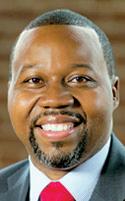
Later in life, I saw the payday loan cycle up close — how it traps people, how it tempts you with quick relief but leaves you bound to long-term pain.
I still remember standing in the car dealership, in what felt like a payday loan office, signing papers I knew would cost me significantly. I thought it was survival, but it was a trap.
Money is never just about numbers. It’s about the story you believe, the habits you practice, and the company you keep.
That’s why I built the Triple R Method™ — Reframe, Reclaim, Rename. It’s not just about career growth. It also applies to how we approach money. Here’s how to break free and step toward financial freedom.
1. Reframe Your Thinking
For years, I carried a hidden money story: “I’ll always struggle.” When
you’ve lived with less, it’s easy to believe that lack is your destiny. But here’s the truth: money doesn’t have to master you. You can learn to master it. Wealth isn’t built in one leap; it’s built step by step.
When I moved from poverty into professional life, I had to reframe my mindset. I wasn’t just surviving anymore; I was learning how to multiply. That shift allowed me to see money as a tool.
Your Move: Write your money story. Is it scarcity-driven (“I’ll never get ahead”) or growth-driven (“I can build wealth over time”)? Then reframe it.
Scripture says, “As a man thinketh in his heart, so is he” (Proverbs 23:7).
2. Reclaim your personal agency
Money management isn’t just about income; it’s about ownership. Too often, people wait for a raise, a windfall, or a lucky break. But freedom begins when you take control of what’s already in your hands.
When I stepped into banking, I didn’t have domain expertise. What I had was discipline. I wasn’t a lazy learner — I studied, asked, applied. The same principle applies to finances: you can’t be a lazy learner with money.
Your Move: Build a budget. Start investing, even small amounts. Educate yourself on how money works.
Scripture says, “The plans of the diligent lead
surely to abundance” (Proverbs 21:5).
3. Rename your social networks
Your financial habits are shaped by your circle. If everyone around you normalizes debt, and overspending, you’ll absorb those values.
I’ve had to make tough decisions about who I spend time with. Some friends weren’t aiming for growth, and if I kept walking with them, I would’ve stayed small. But when I started spending time with people who talked about ownership and building, wealth began to feel normal — not foreign.
Your Move: Audit your money circle. Who talks about building, saving, and investing? Who talks only about spending? Choose to walk with those that model financial wisdom.
Scripture says, “Walk with the wise and become wise, for a companion of fools suffers harm” (Proverbs 13:20).
The bottom line
Financial freedom isn’t just about dollars. It’s about your mindset, your habits, and your networks. Reframe your thinking. Reclaim your agency. Rename your networks. Do that, and money stops being your master.
Scripture says, “You cannot serve both God and money” (Matthew 6:24)
Orvin T. Kimbrough is author of “Twice Over a Man.”


Give yourself the gift of a stress-free season by setting spending boundaries.
Update your routine
Ways to tighten up your household budget
By StatePoint
Sponsored Content. Planning your household budget is much easier when your monthly bills are as low as possible and predictable. Here are three common expenses you can rein in with a few smart strategies:
Insurance: Bundling your policies through one provider, like homeowners and auto or renters and auto, can help you save. There are also steps you can take to keep your premiums in check, such as making key home improvements and avoiding filing small claims. When it comes to auto insurance, a safe driving record and modern
safety features in your car can help keep rates manageable.
Internet: Fast, reliable home internet doesn’t have to break your budget. Thanks to new options, high-speed service can now be both affordable and consistent. T-Mobile Fiber is expanding access to gigabit-speed broadband with new plans available in select locations across the United States. Plans come with a 5-year price guarantee (exclusions like taxes and fees apply), unlimited data, symmetrical upload and download speeds and no monthly equipment fees, installation charges or annual contracts. Each plan also comes with T-Mobile Tuesdays: weekly perks that include exclusive deals on gas, dining, entertainment and
more. Whether you’re a remote worker, streamer or smart home enthusiast, there’s a plan that fits your needs, without automatic price hikes. And now is an especially good time to make the switch, thanks to current promotions.
Groceries: Subscription-based grocery services make meal planning on a budget a breeze, giving you the ability to buy only the groceries you need. Many services pre-fill your cart with go-to items, helping you avoid impulse buys. Make sensible purchasing decisions that are good for your health, and your pocketbook.
With a few updates to your routine, you can lower your monthly expenses and plan your budget well into the future.

Orvin T. Kimbrough
Photo by Jacob Wackerhausen / iStock via Getty Images Plus

